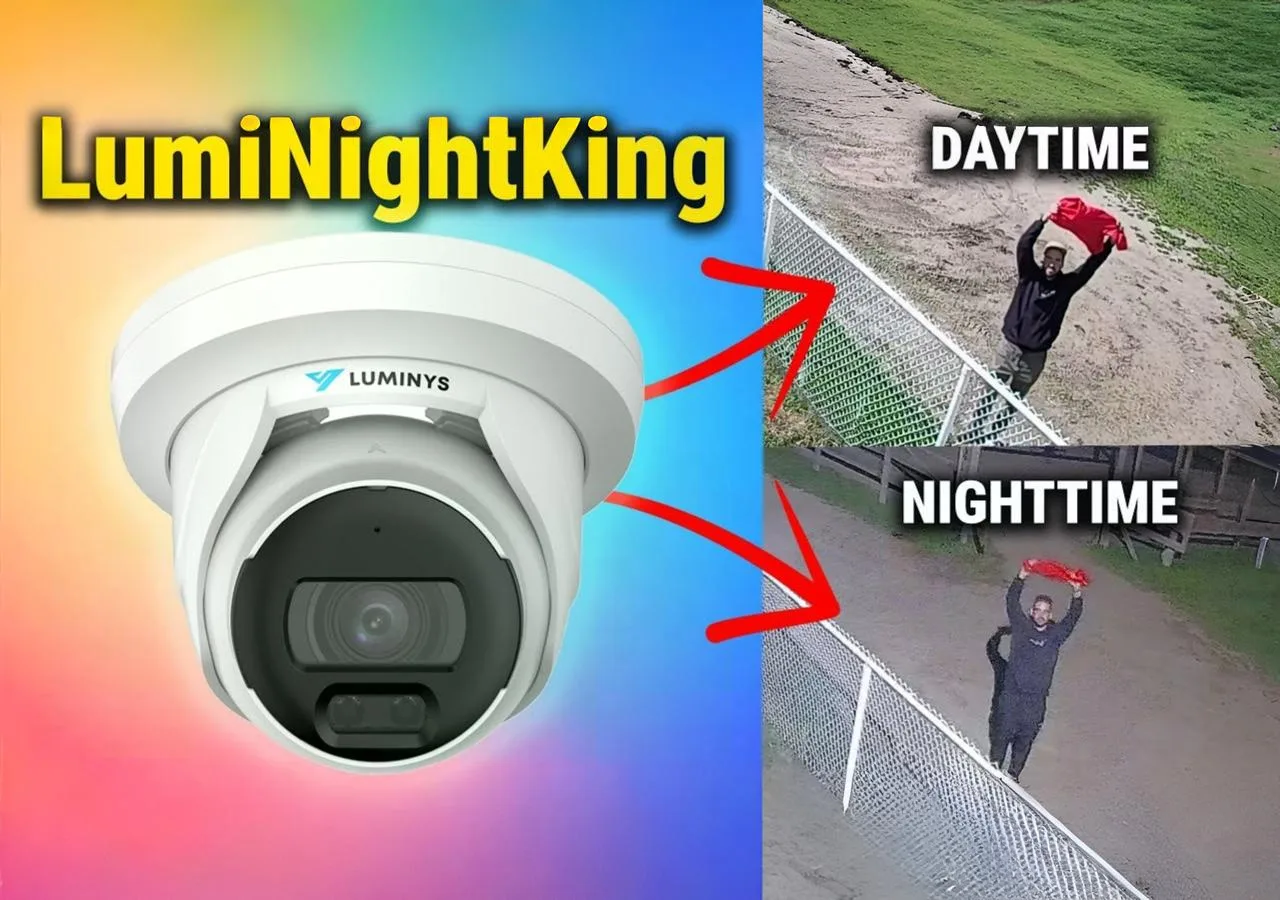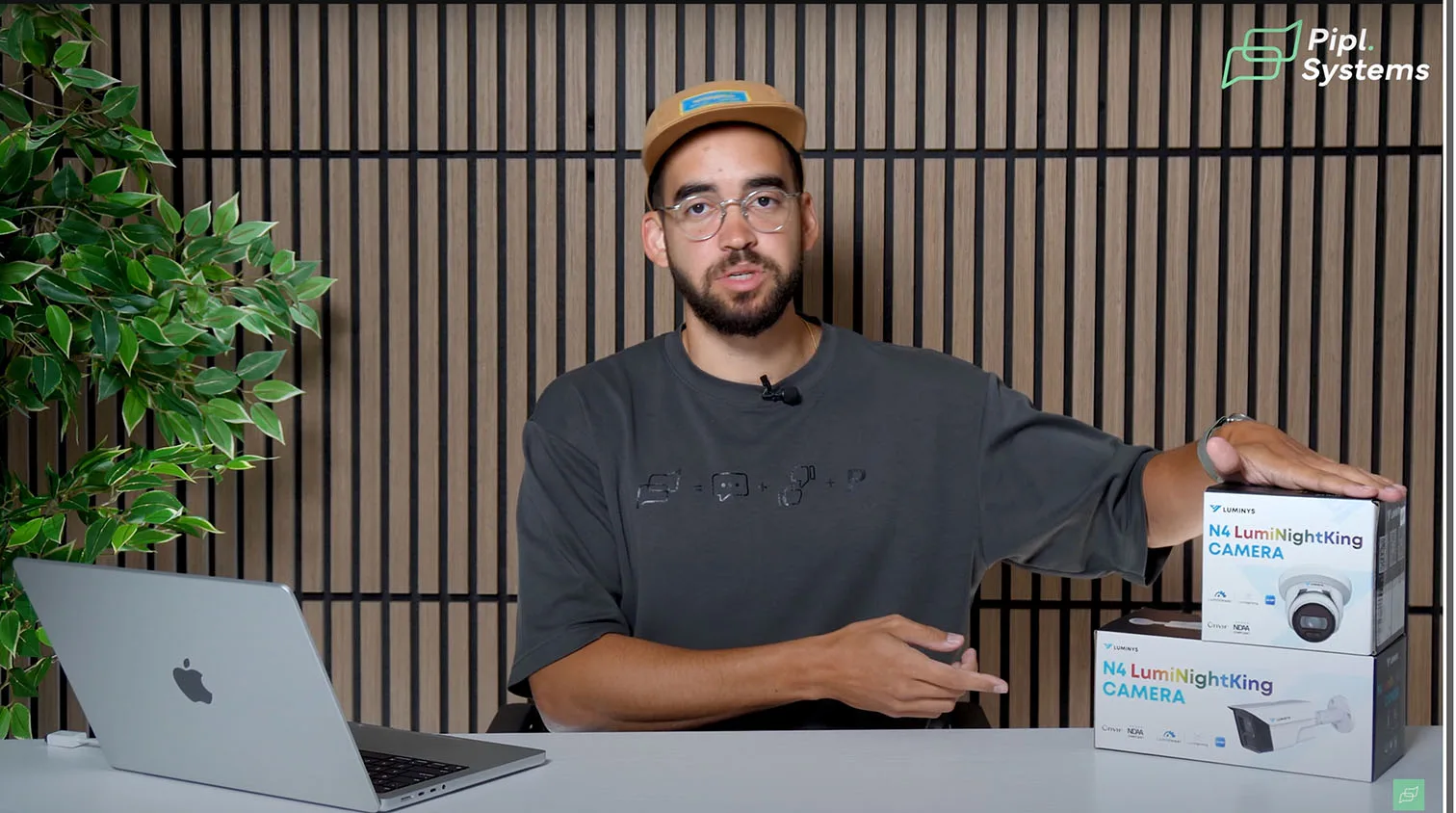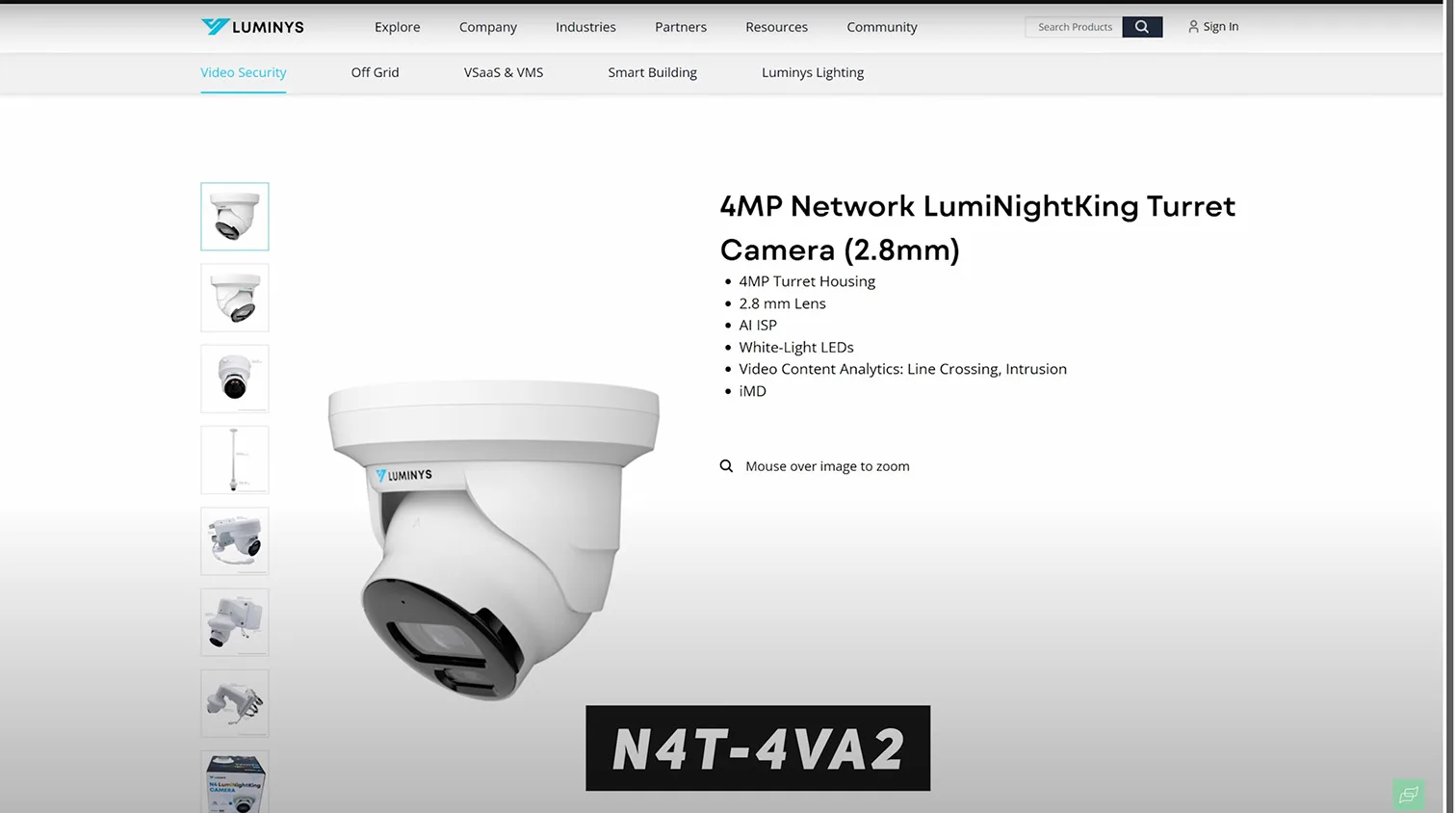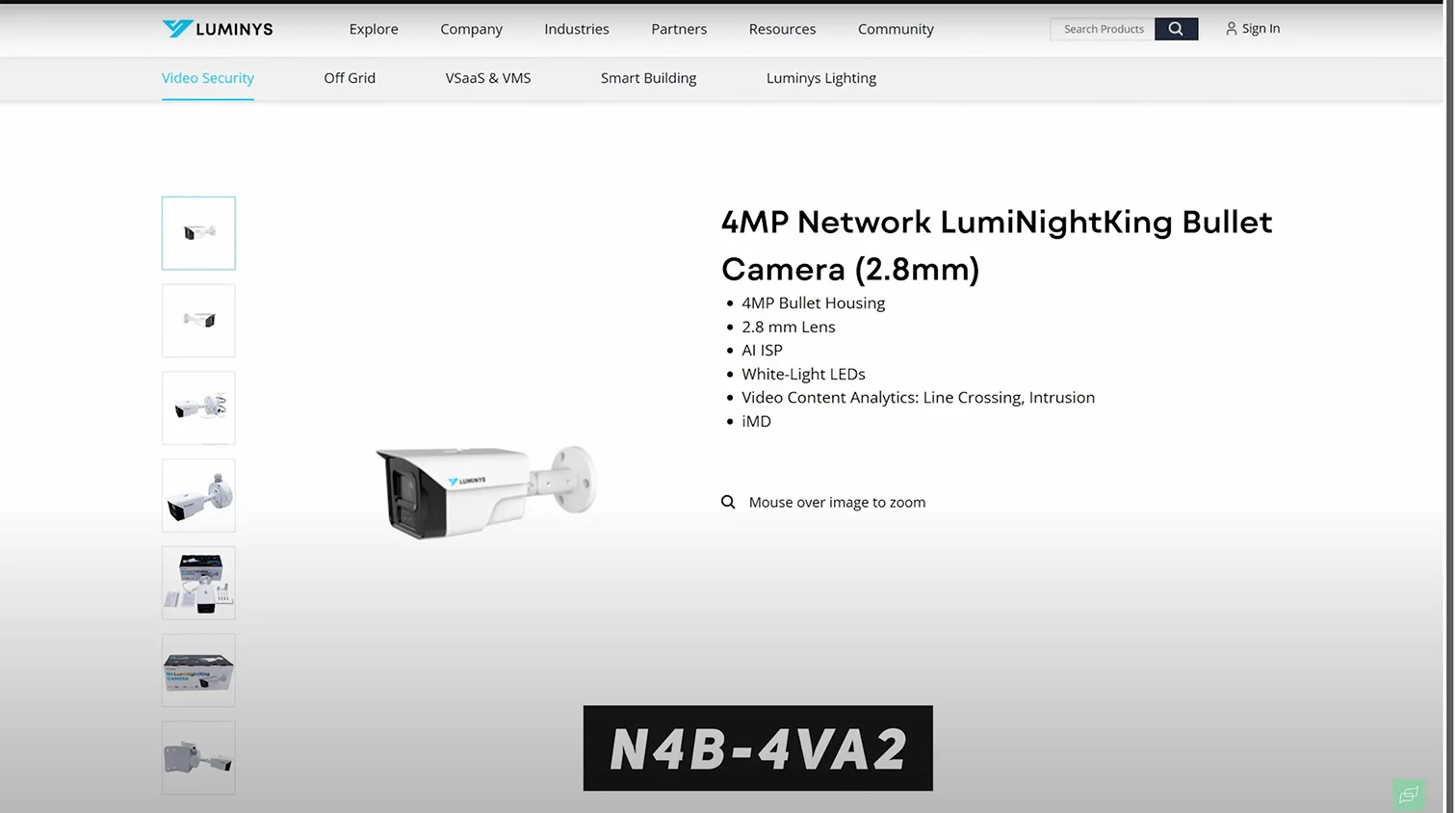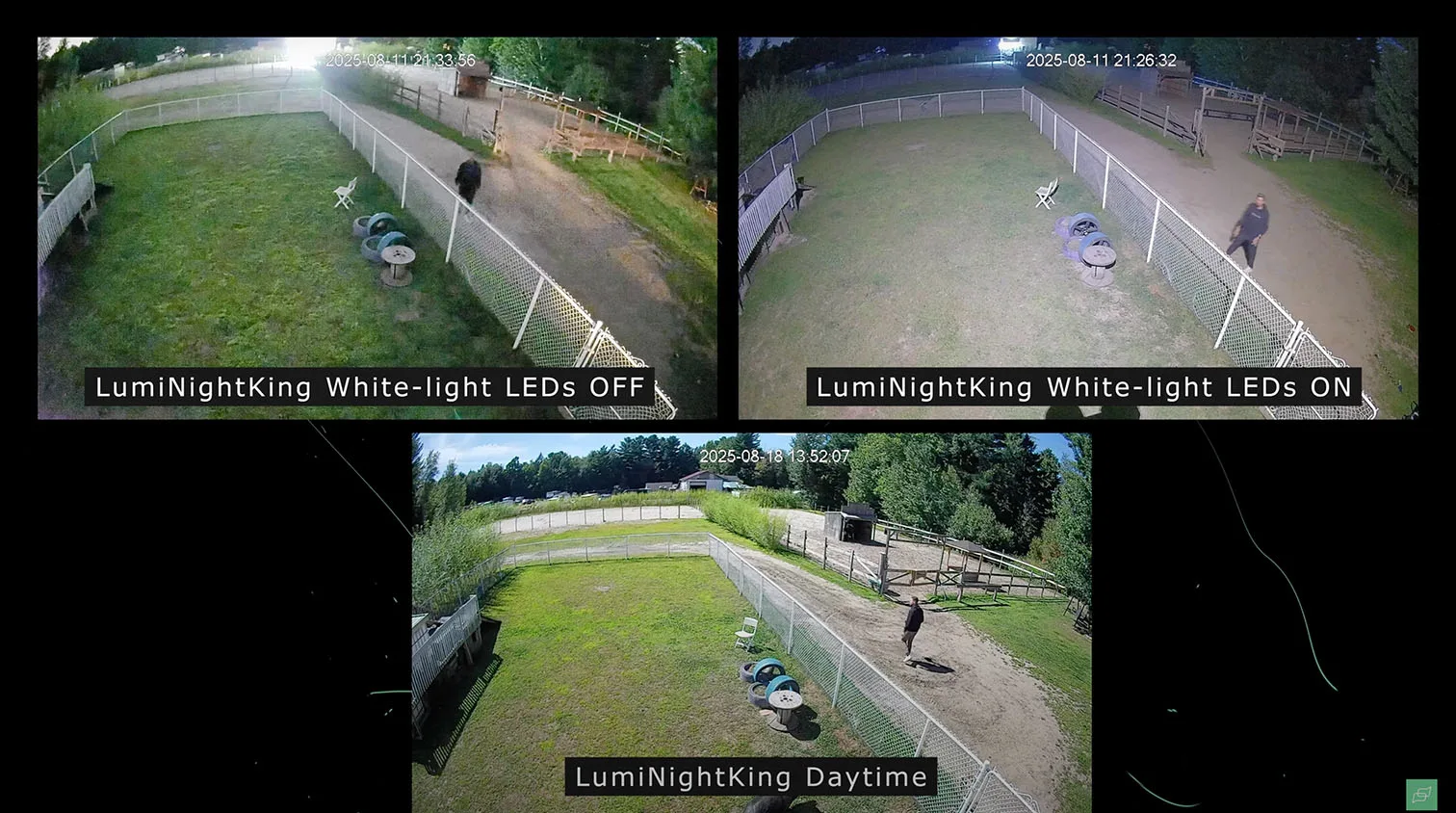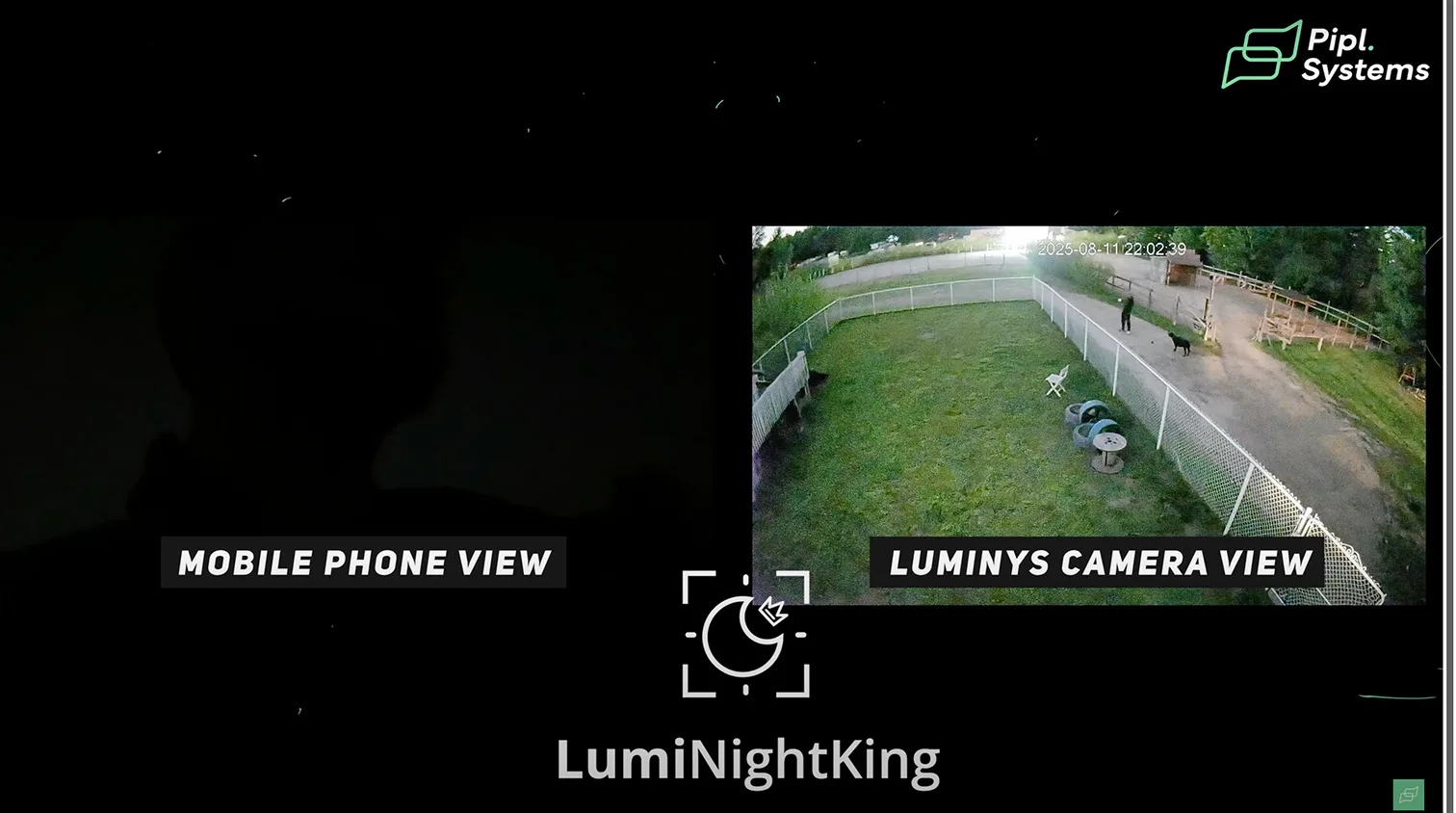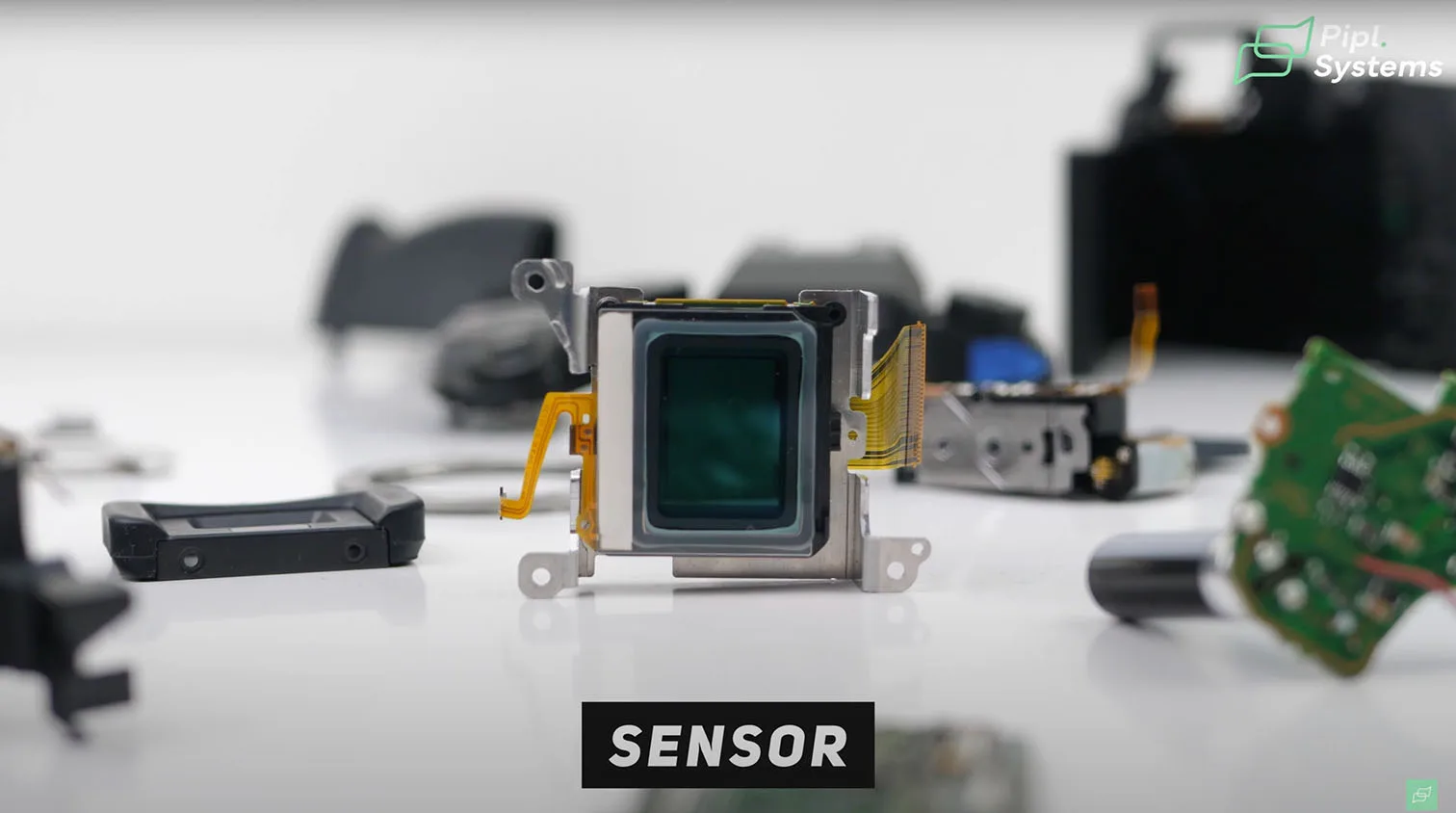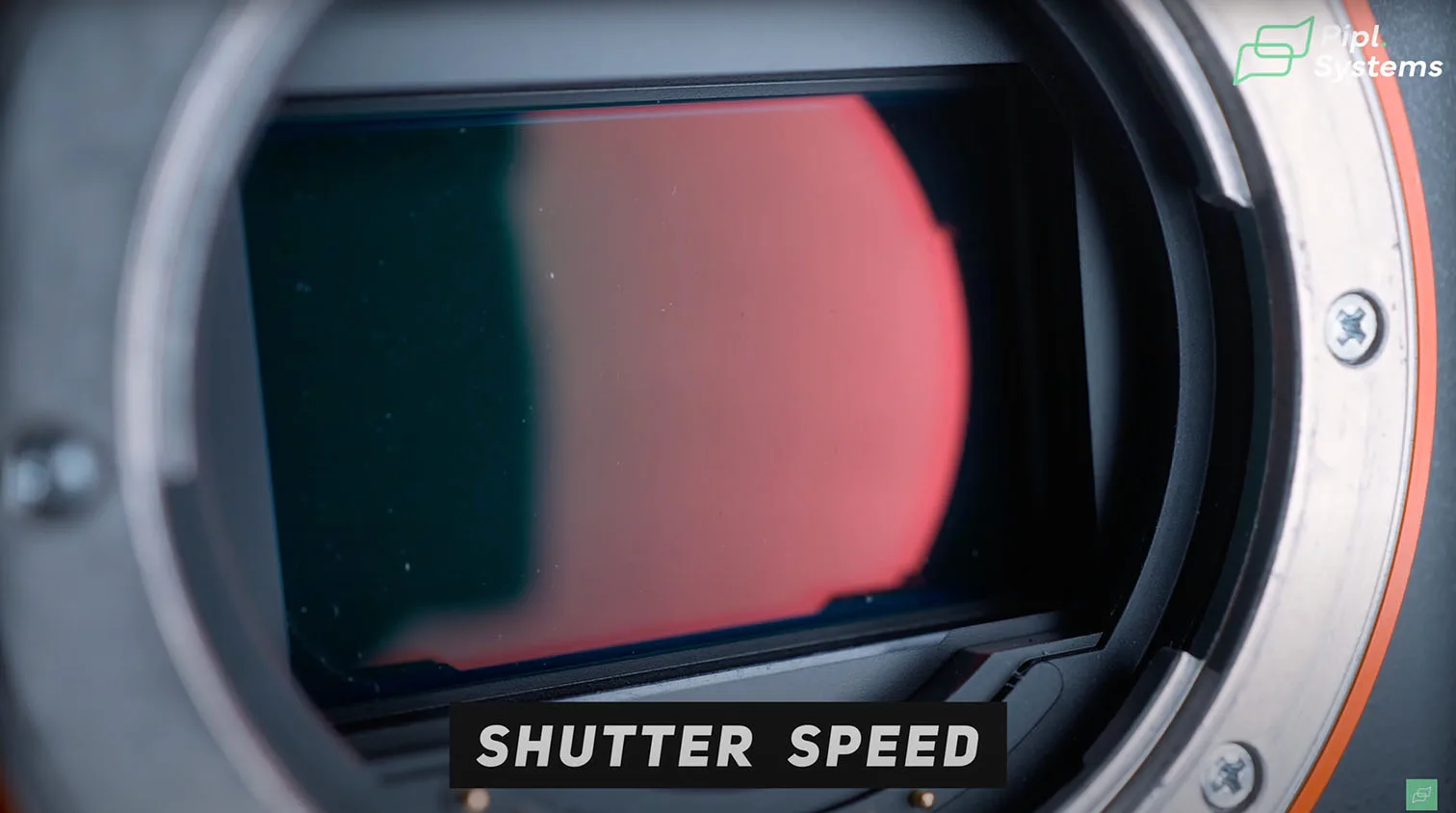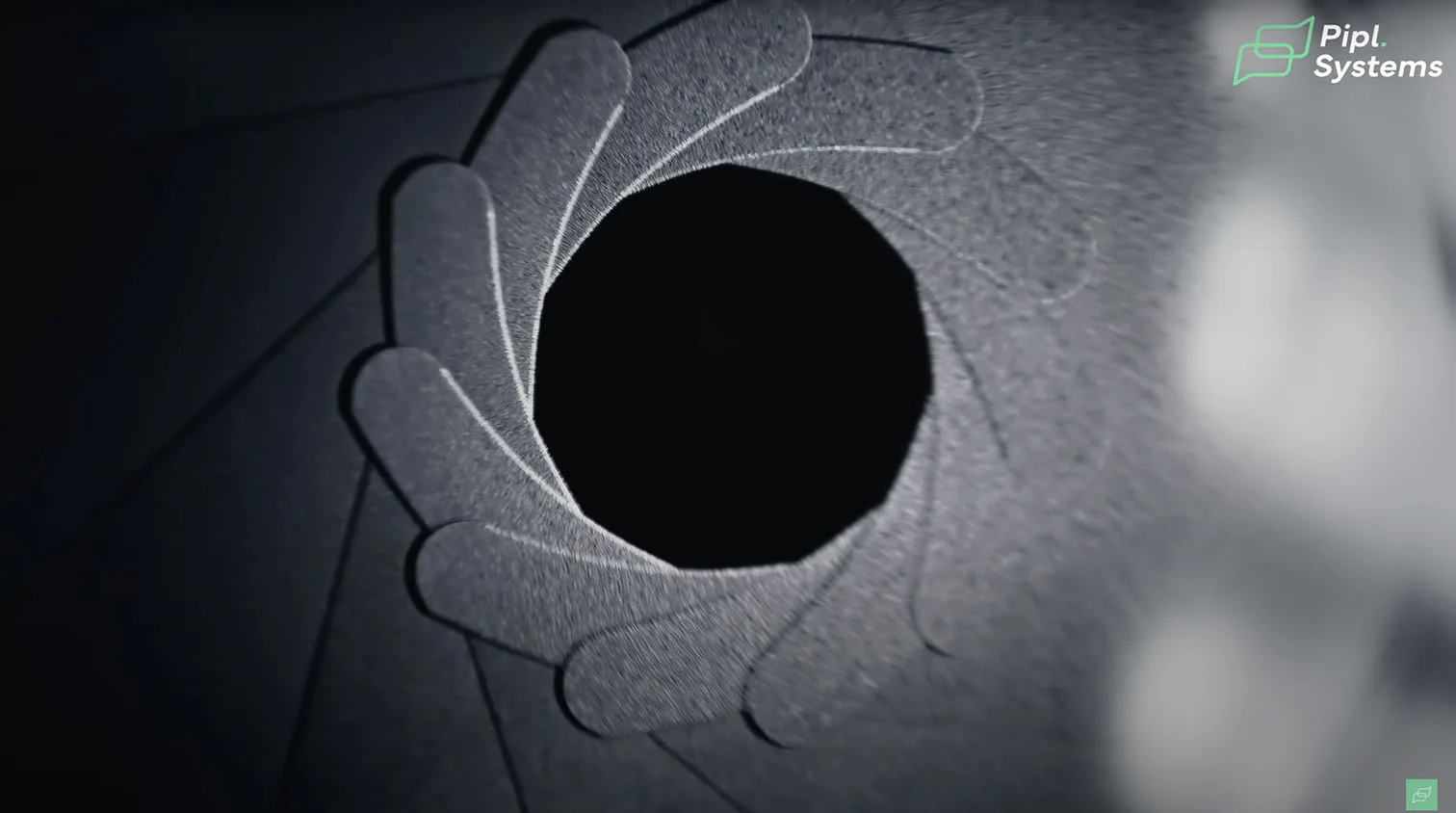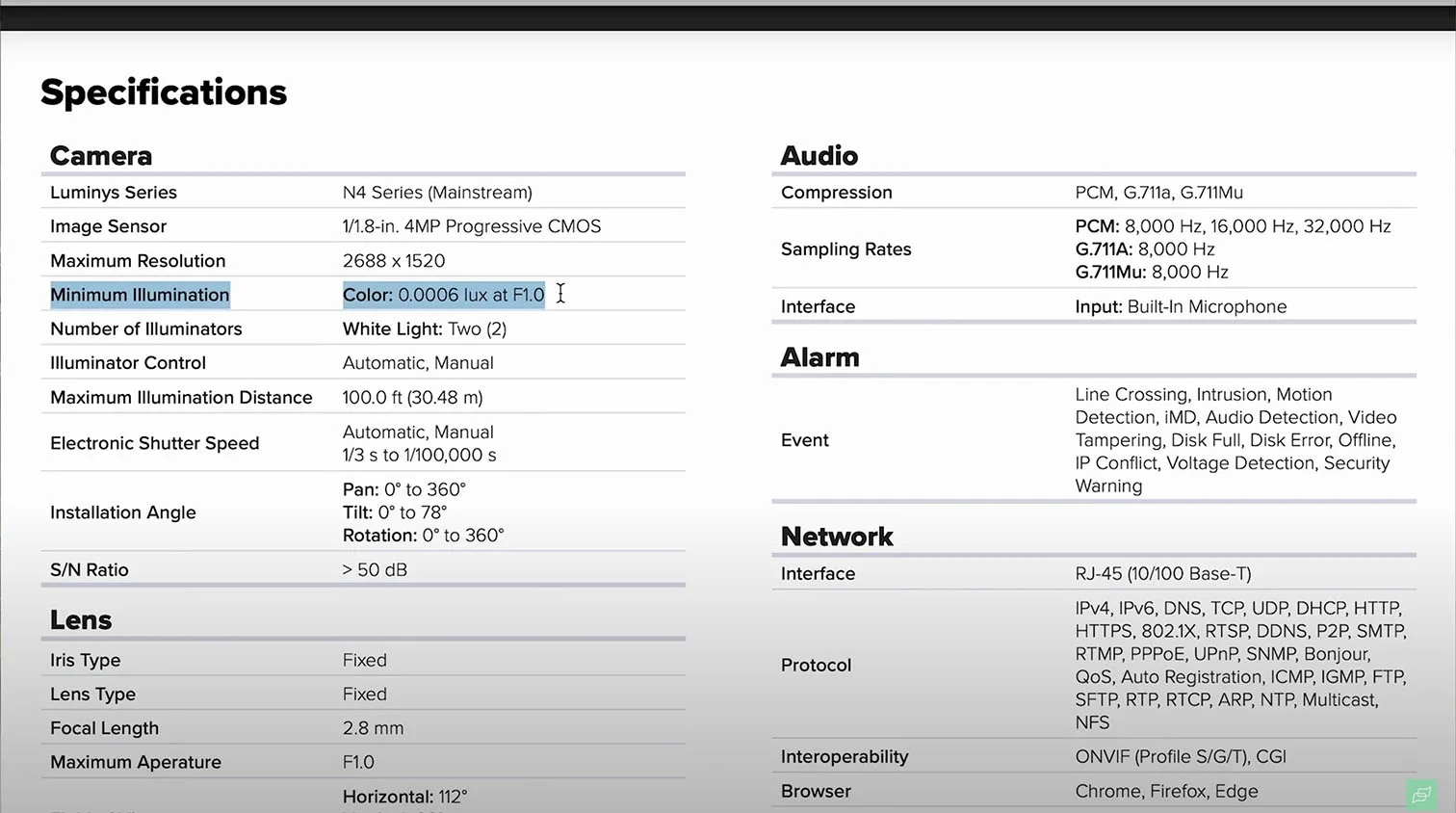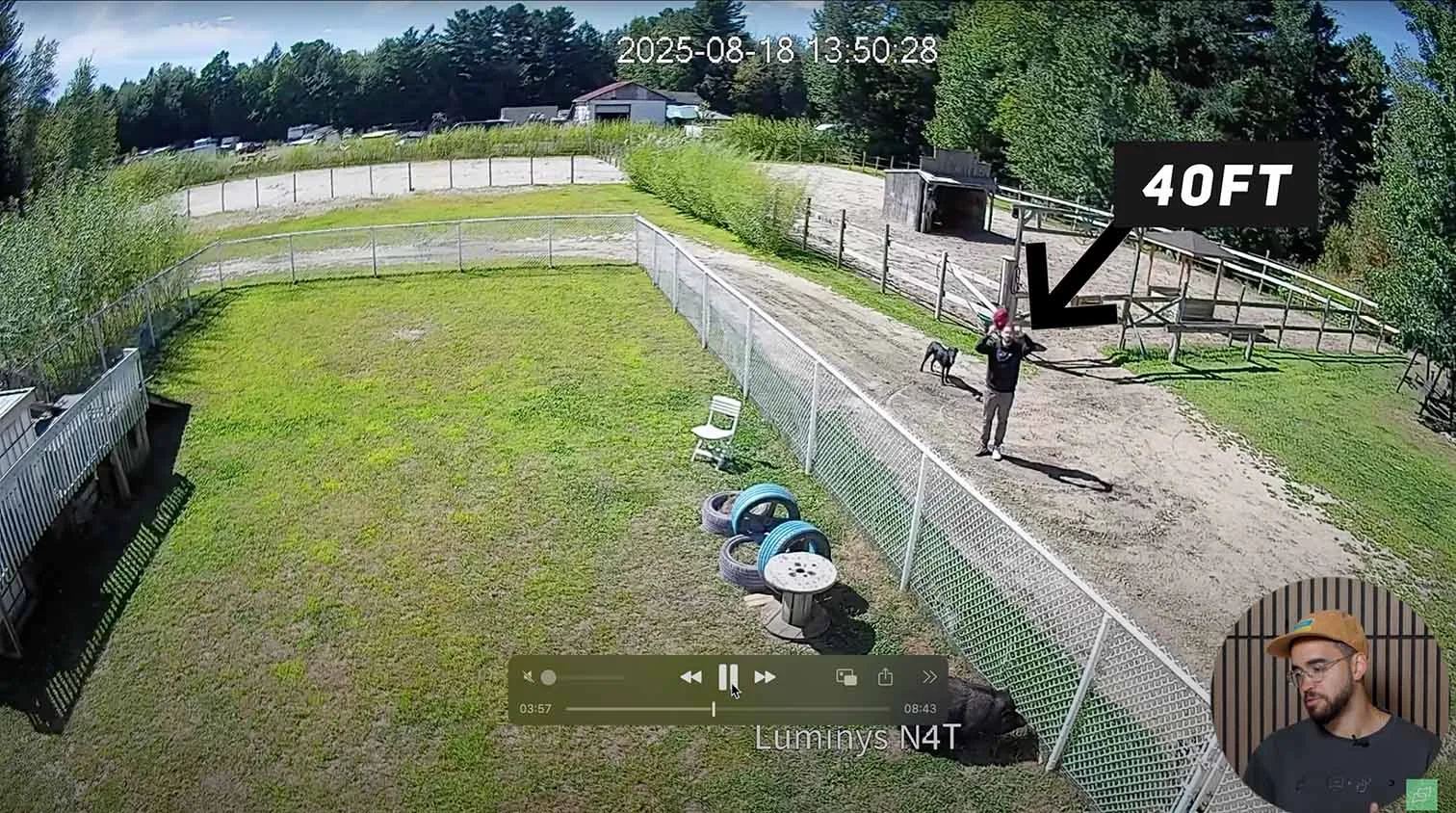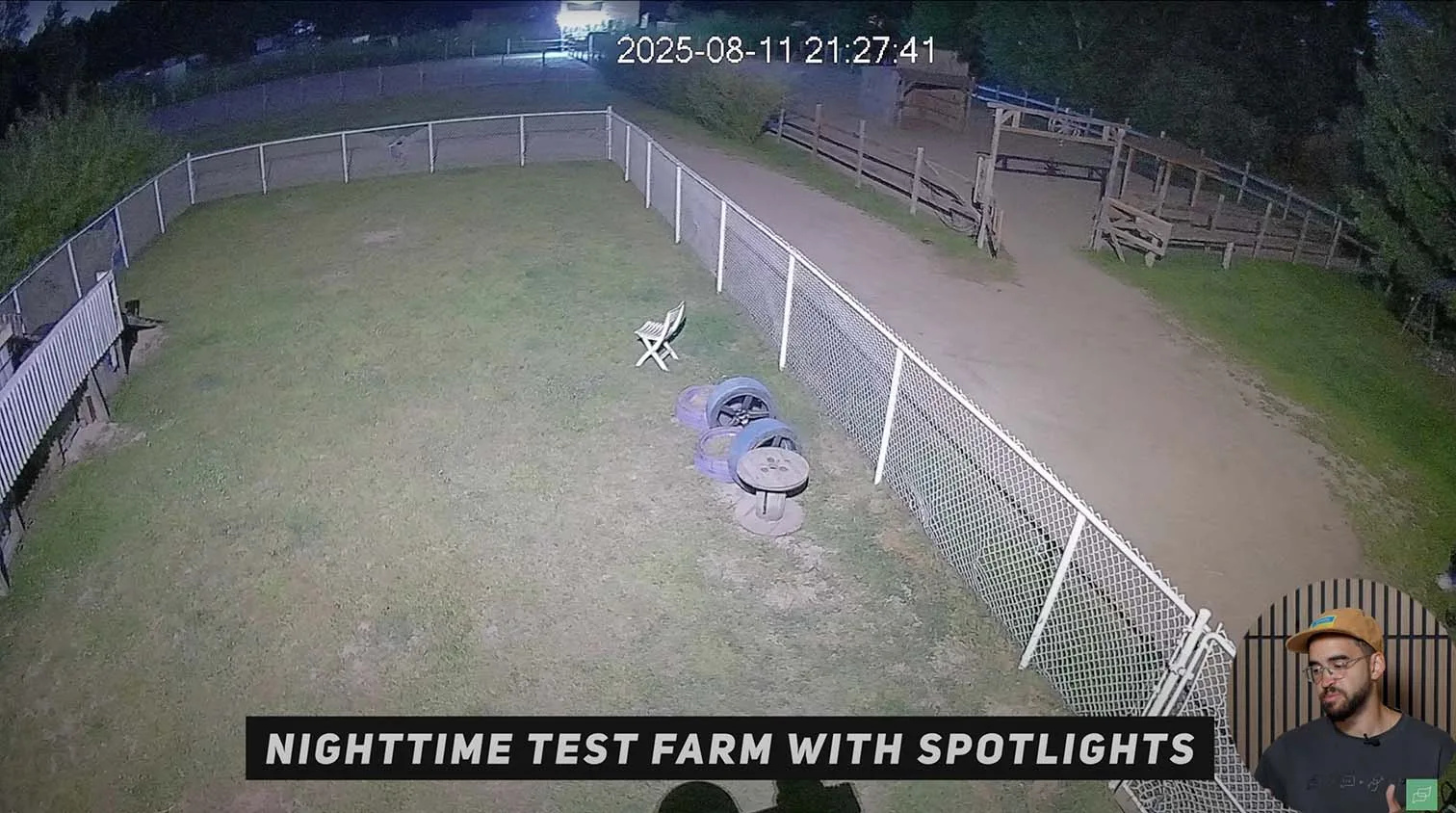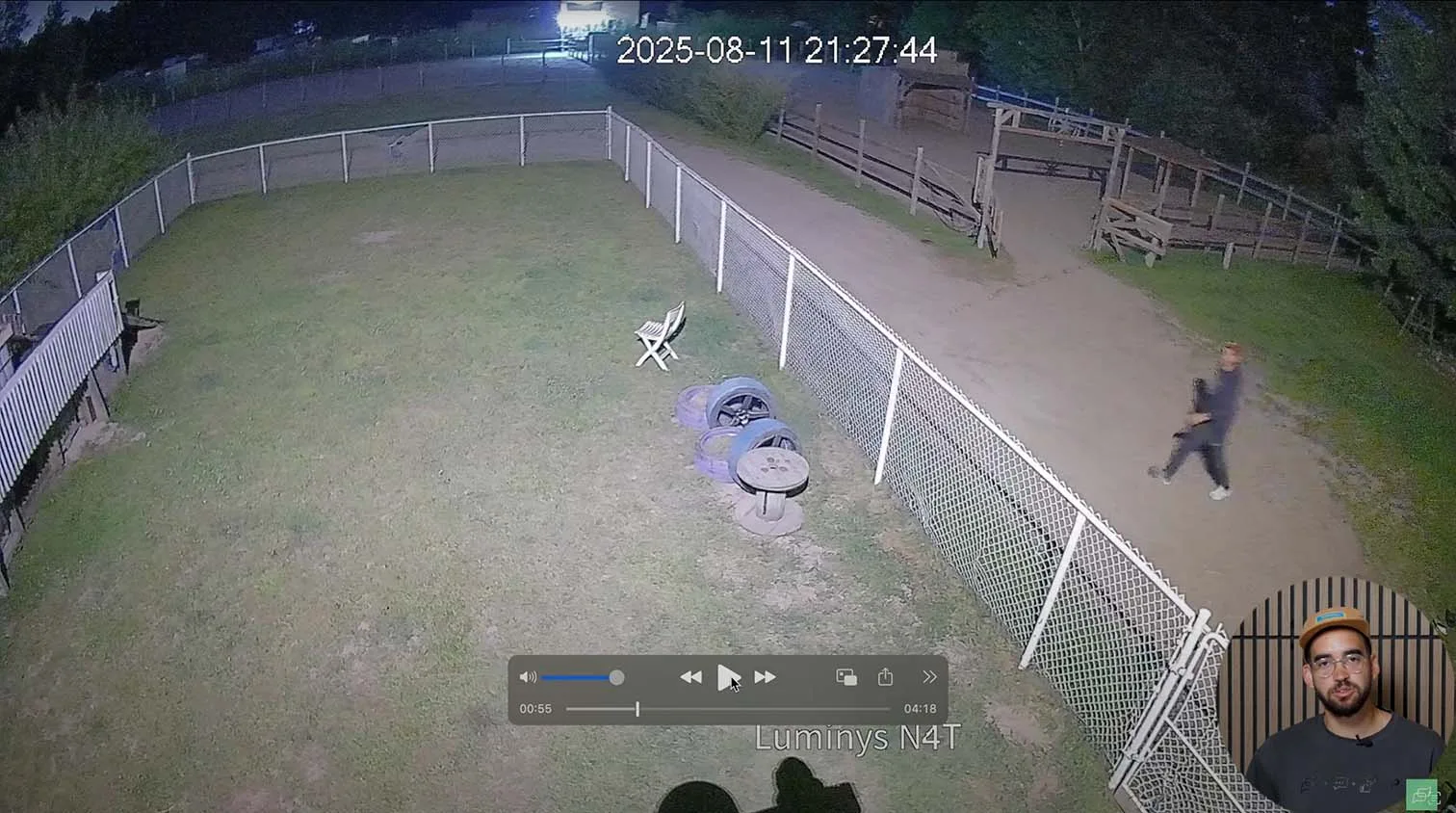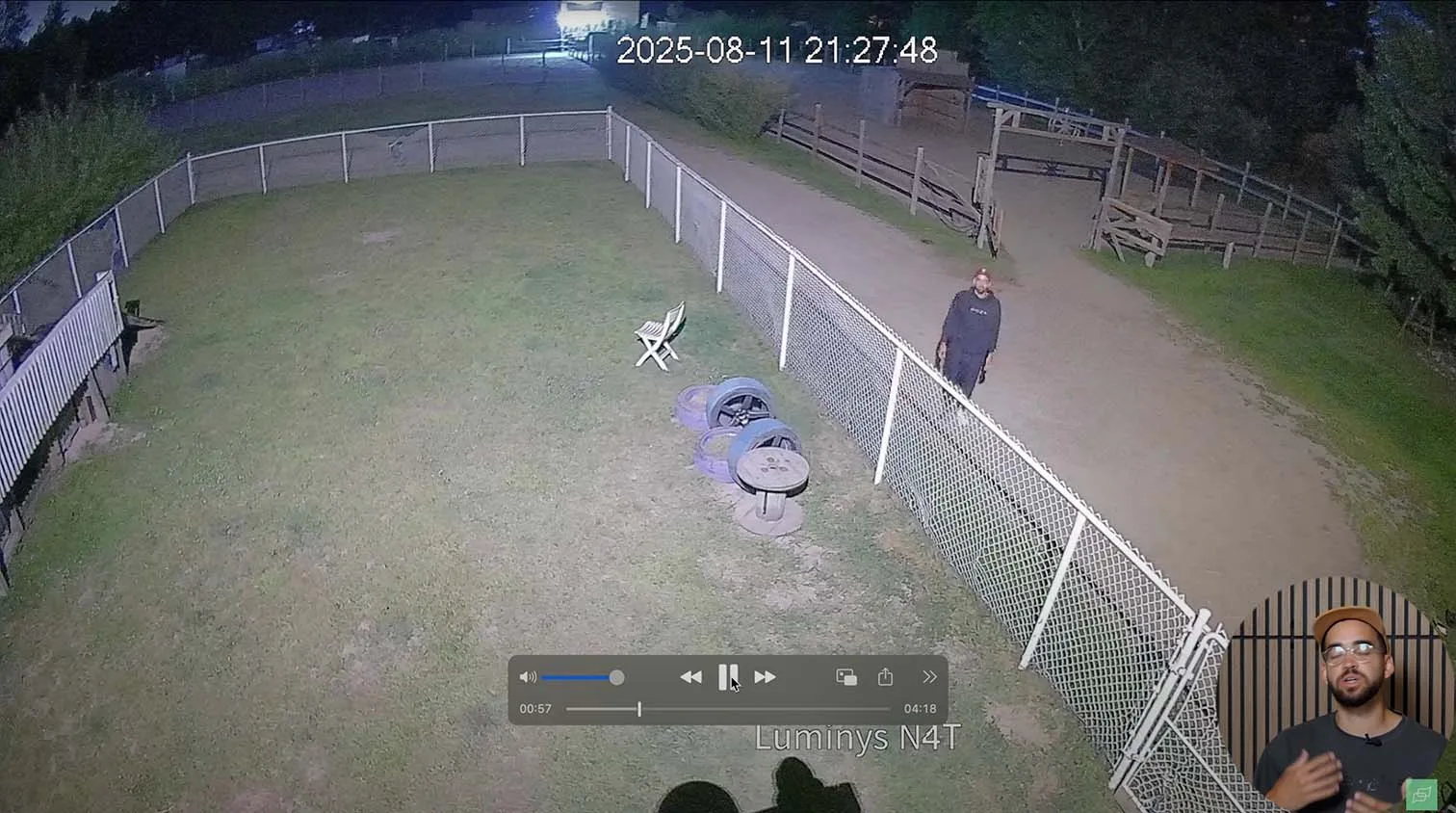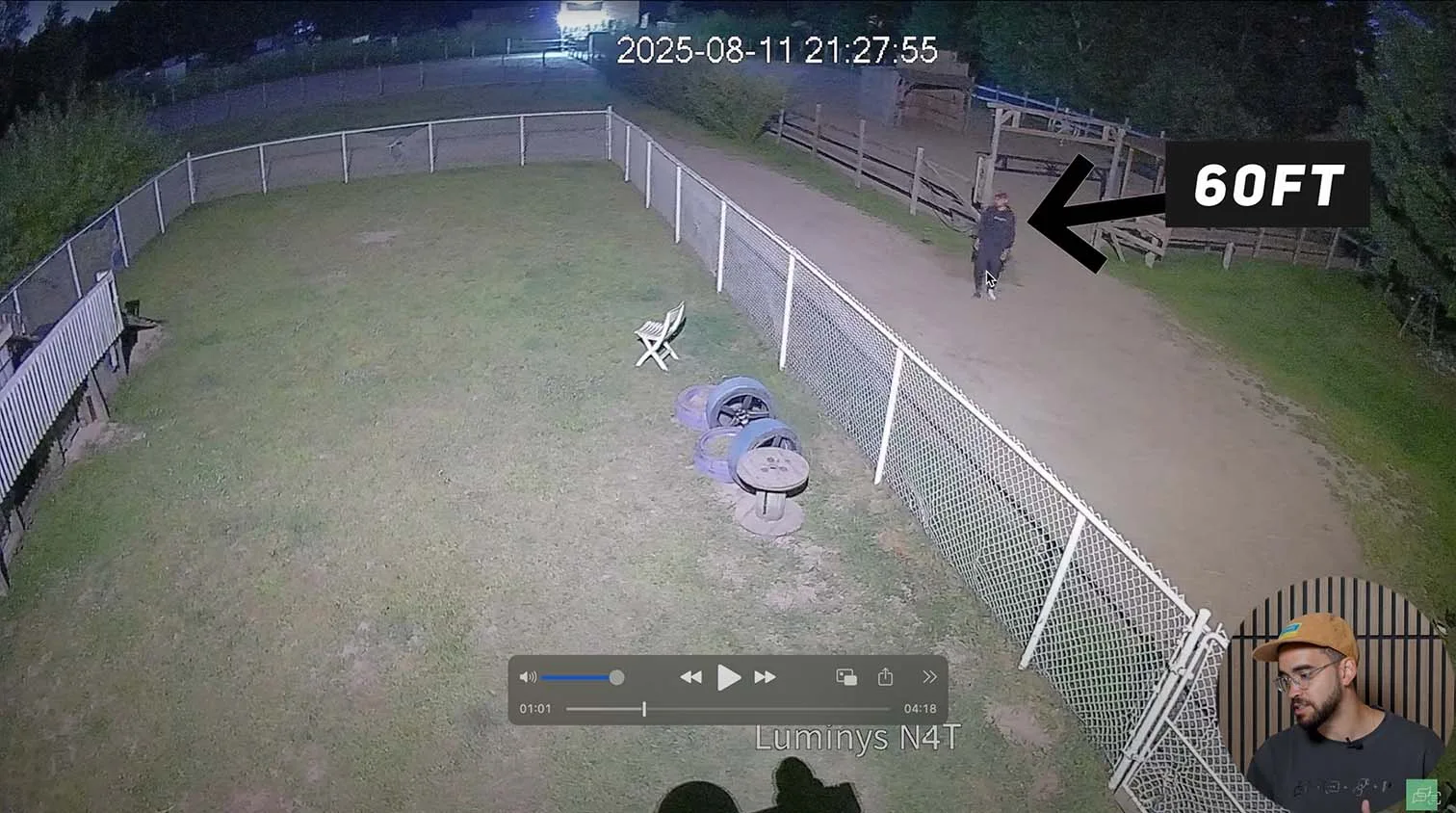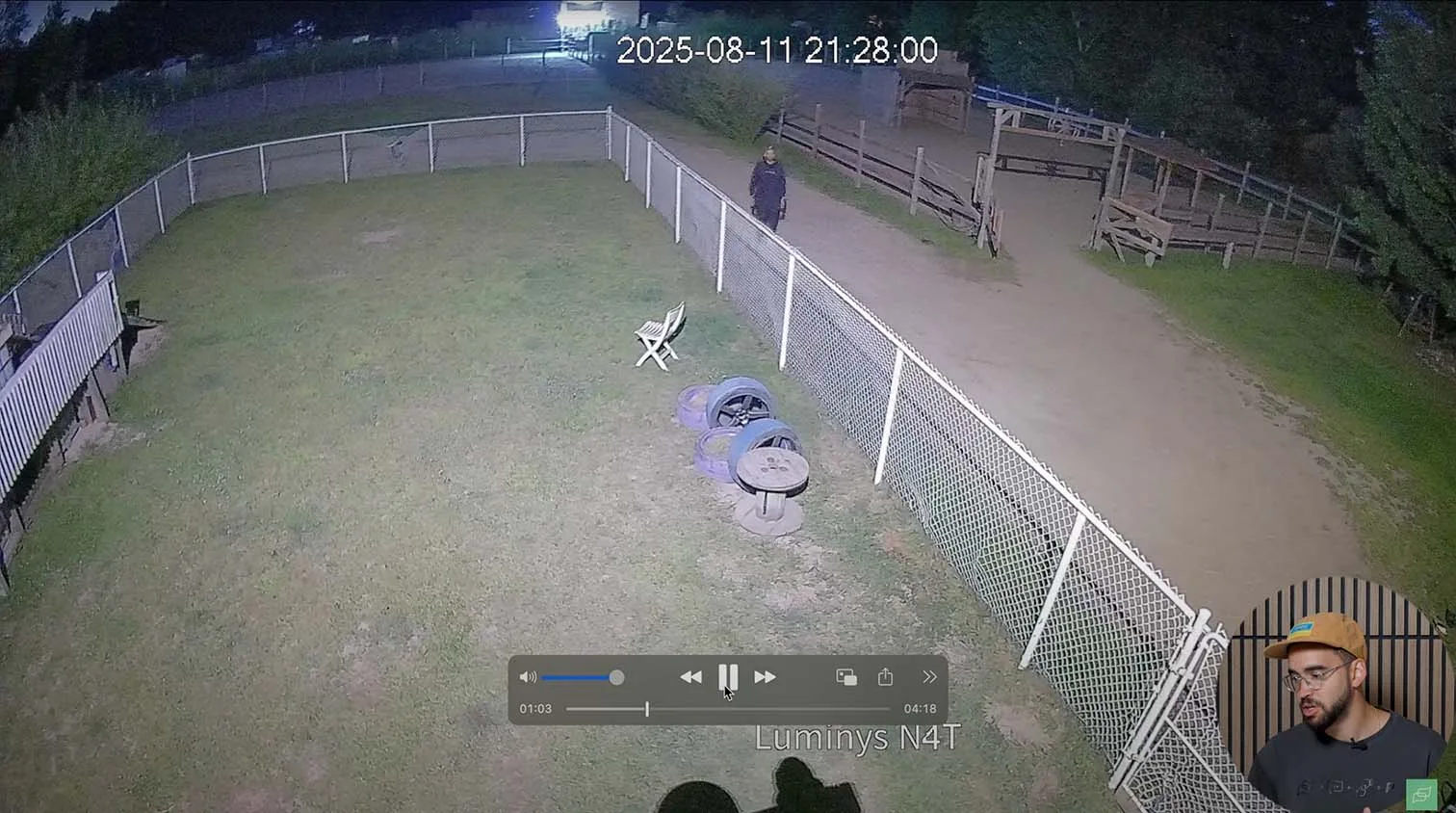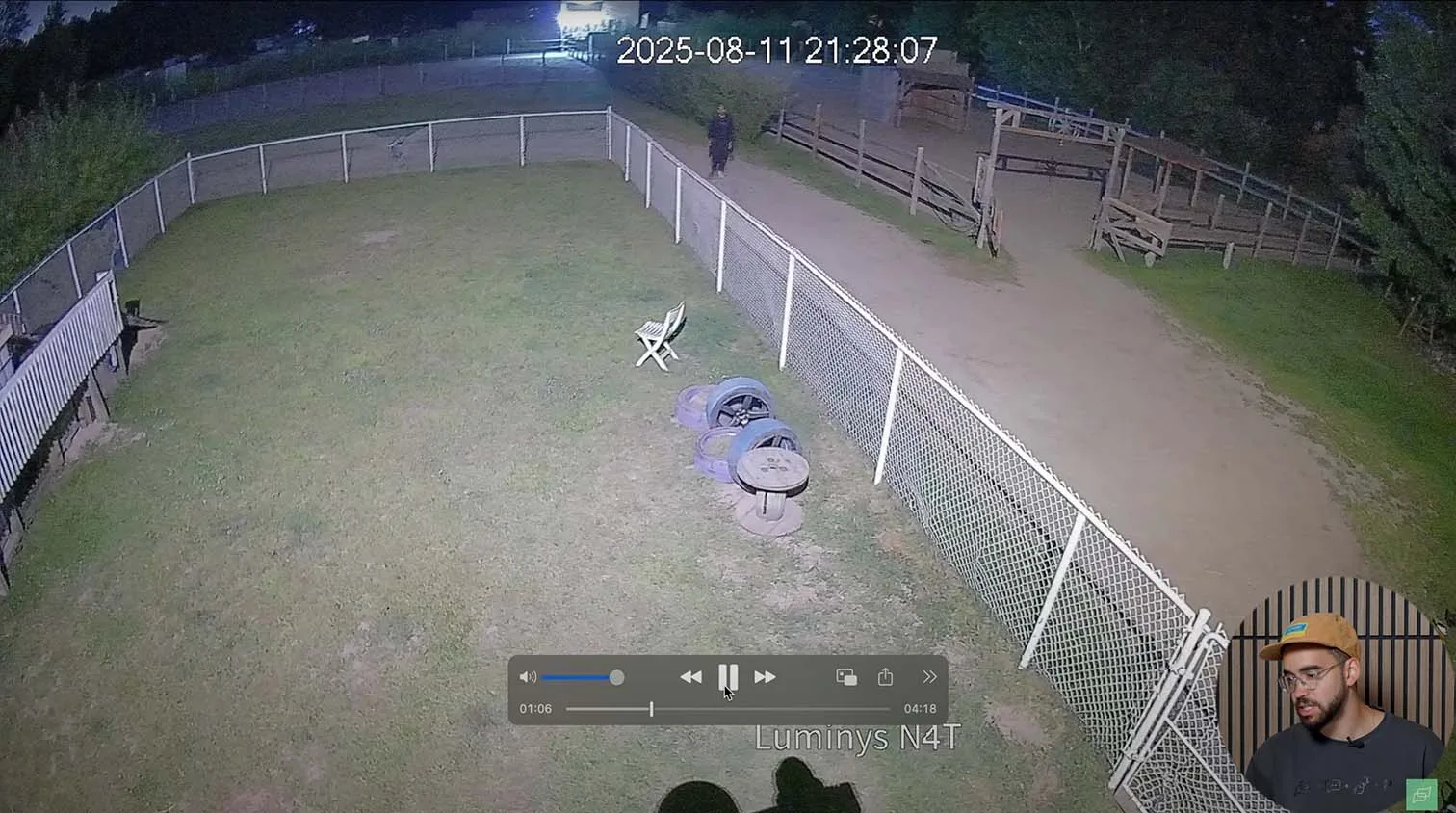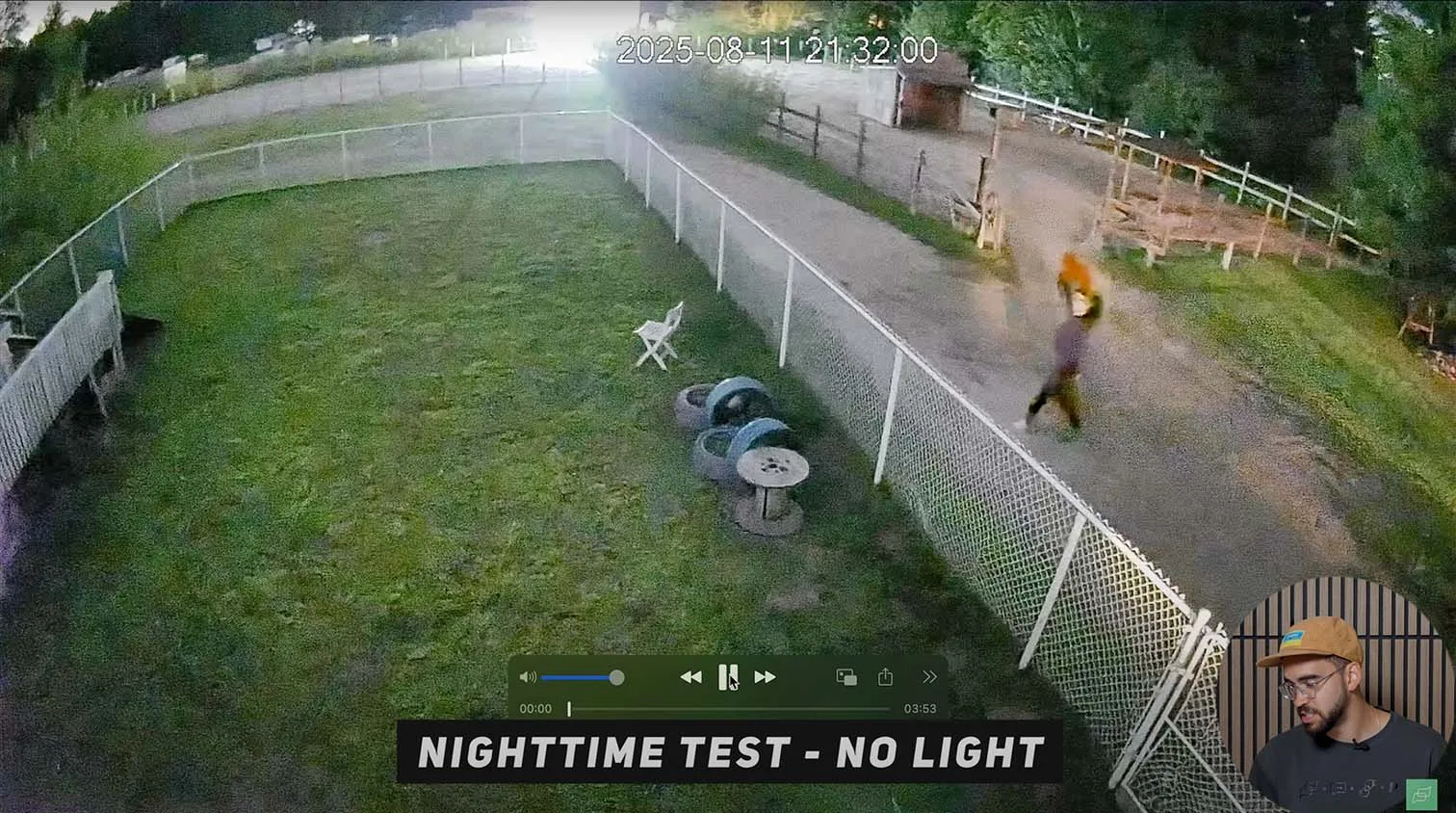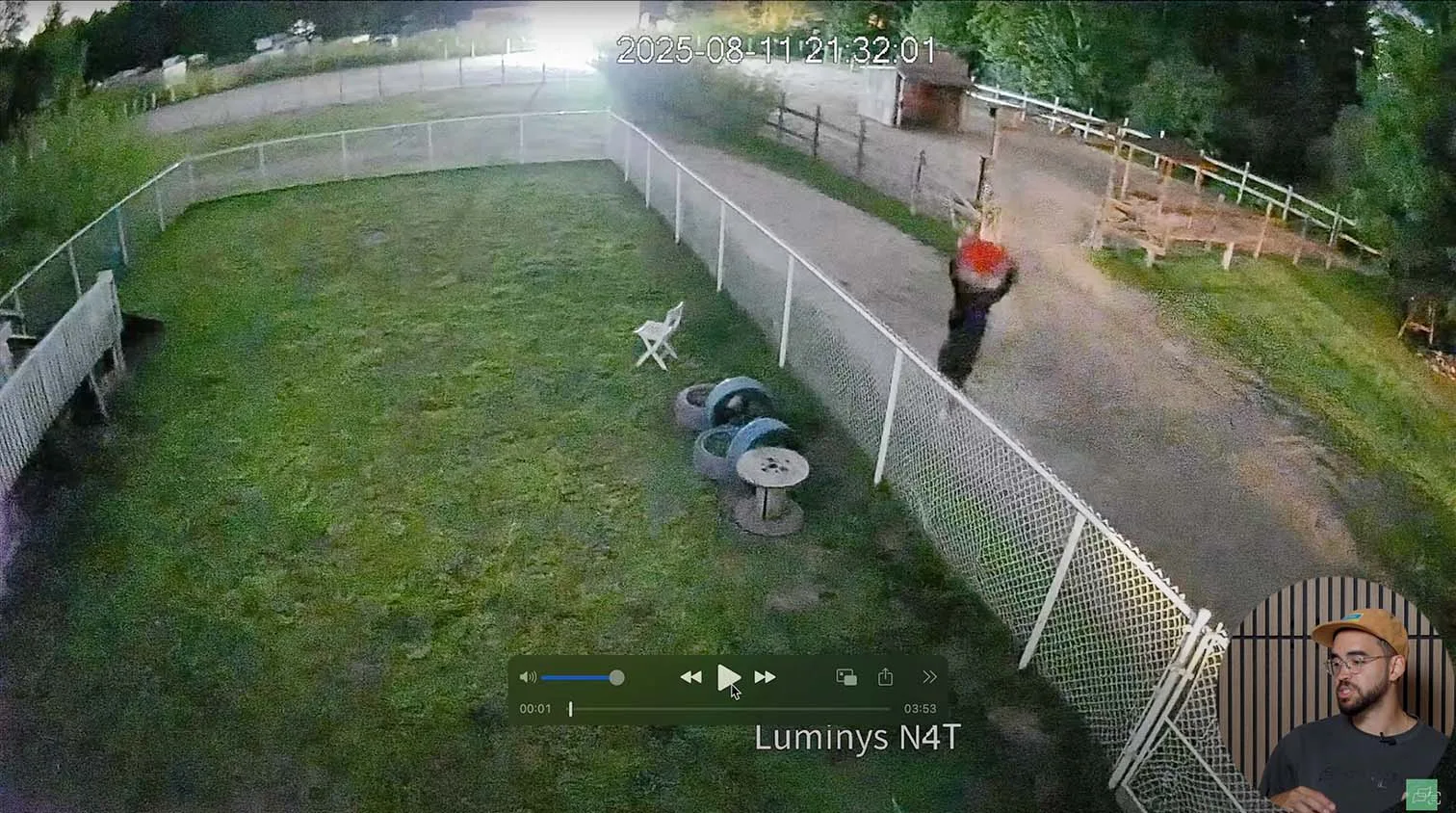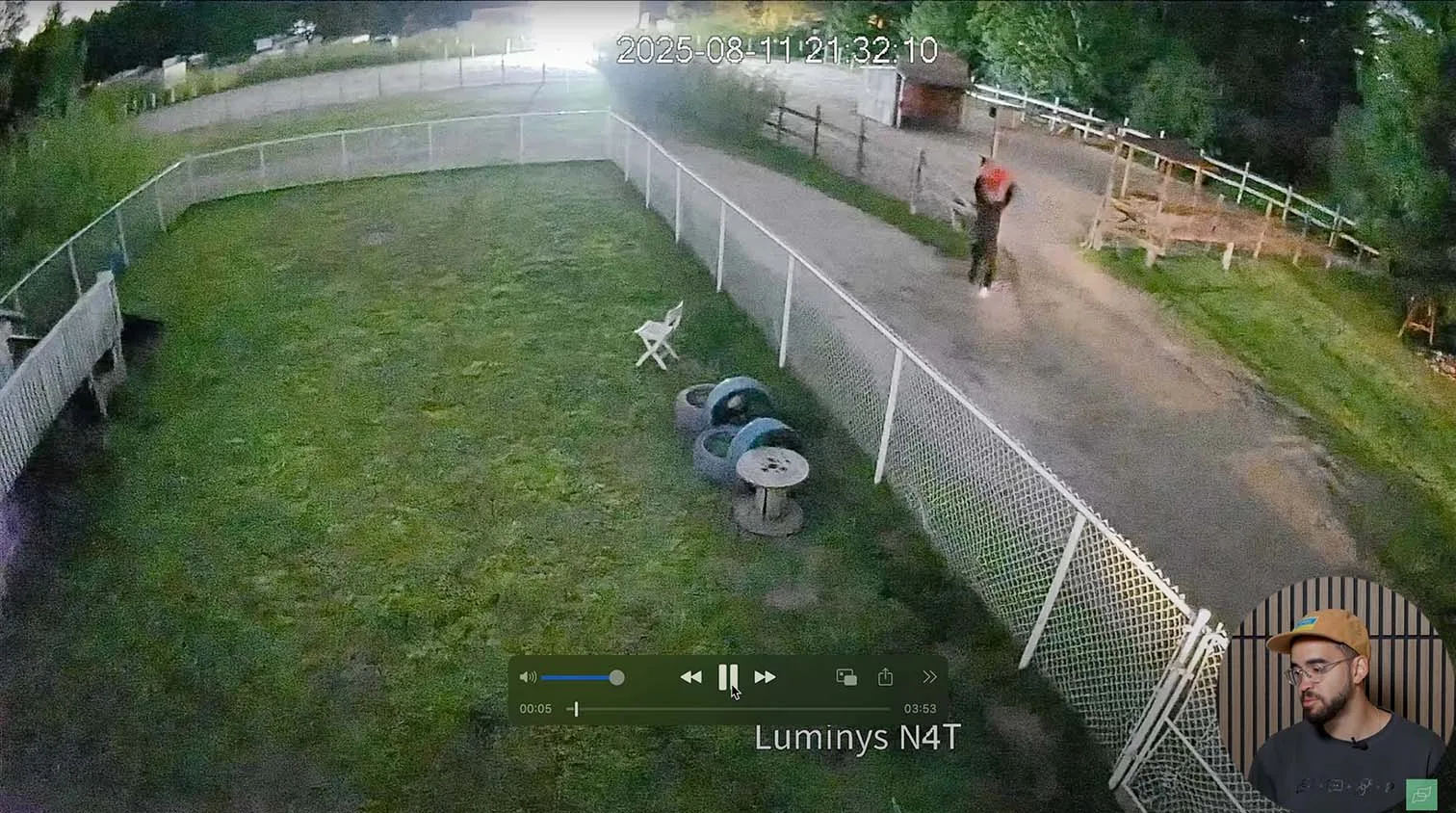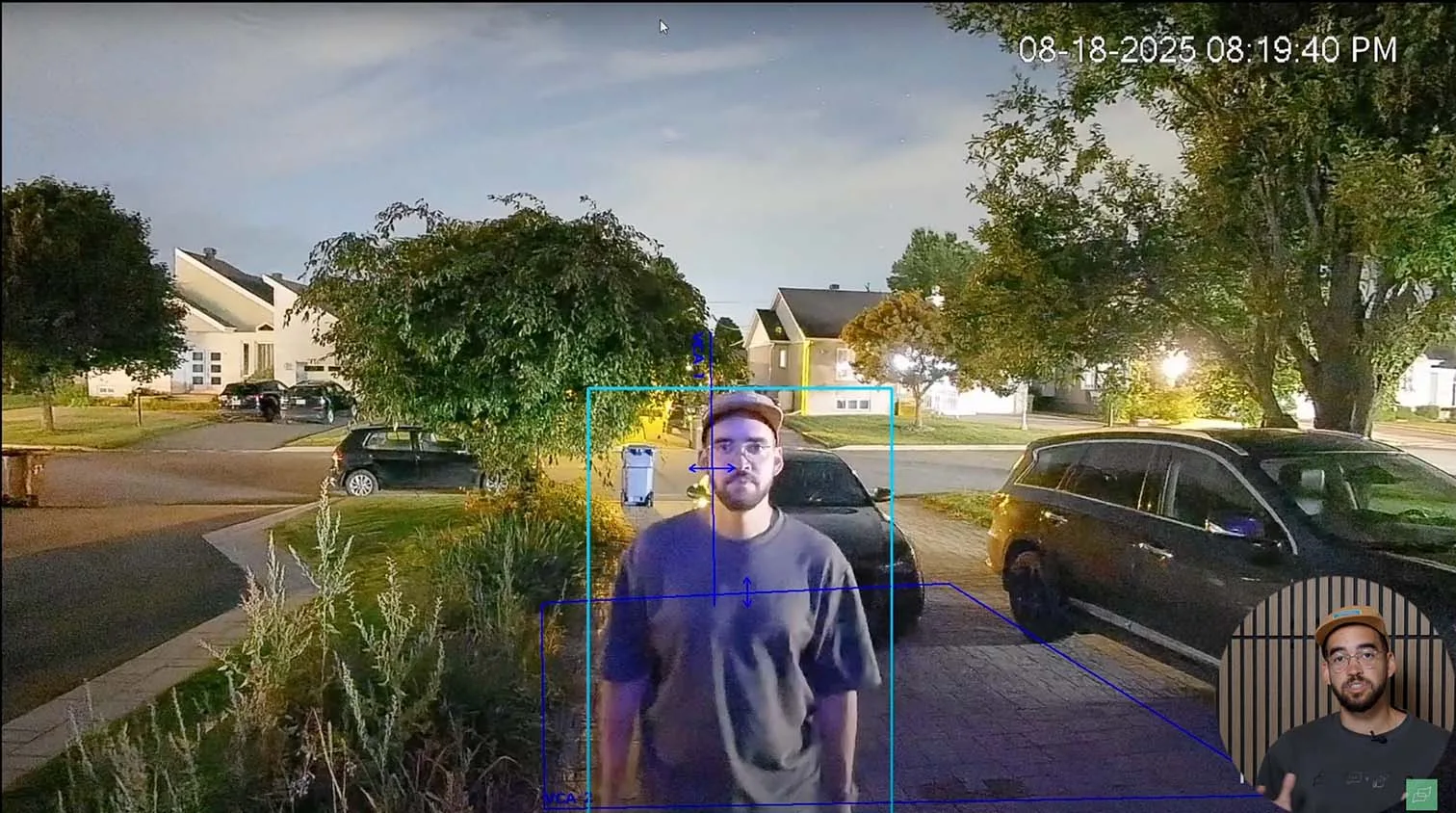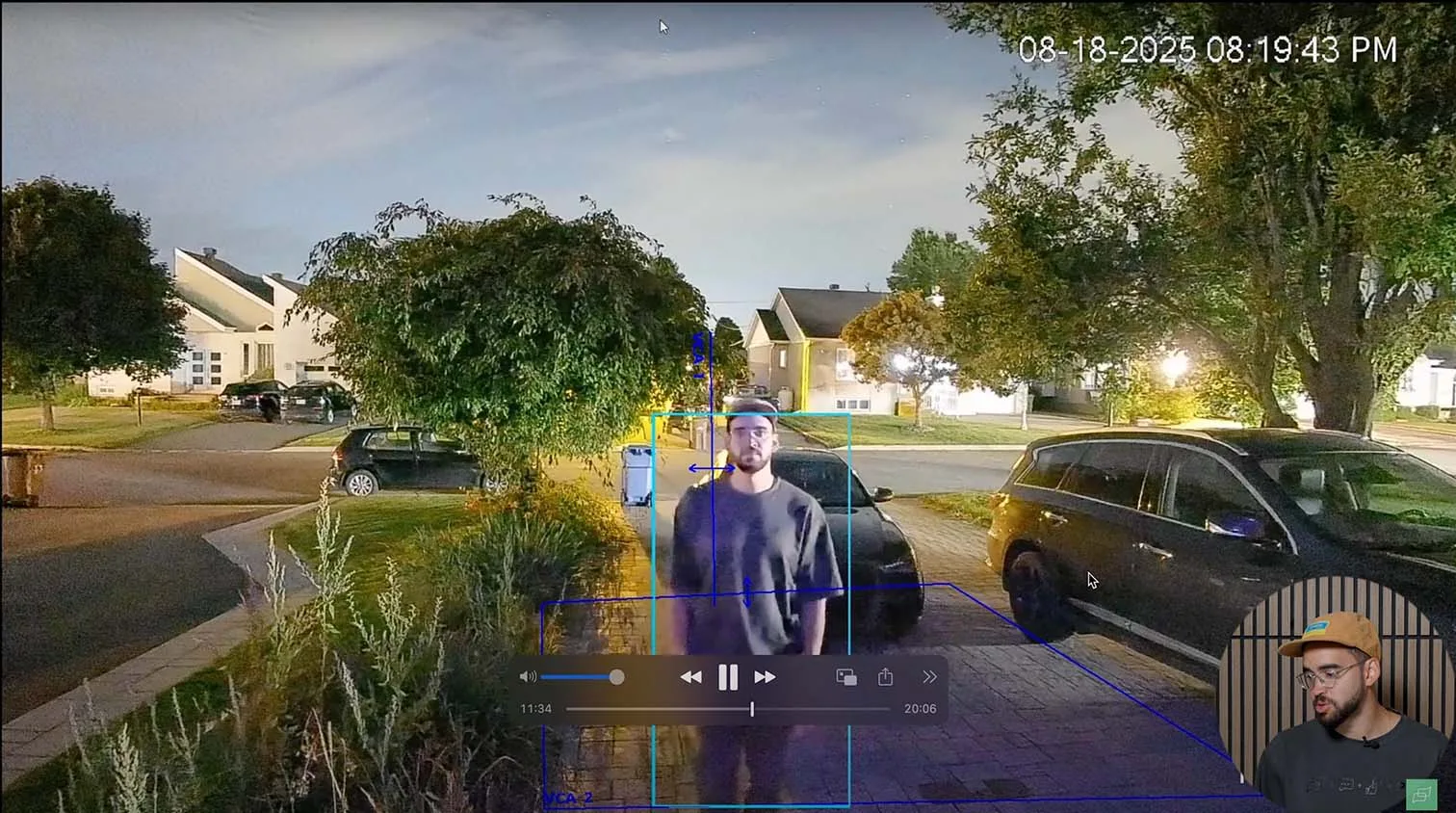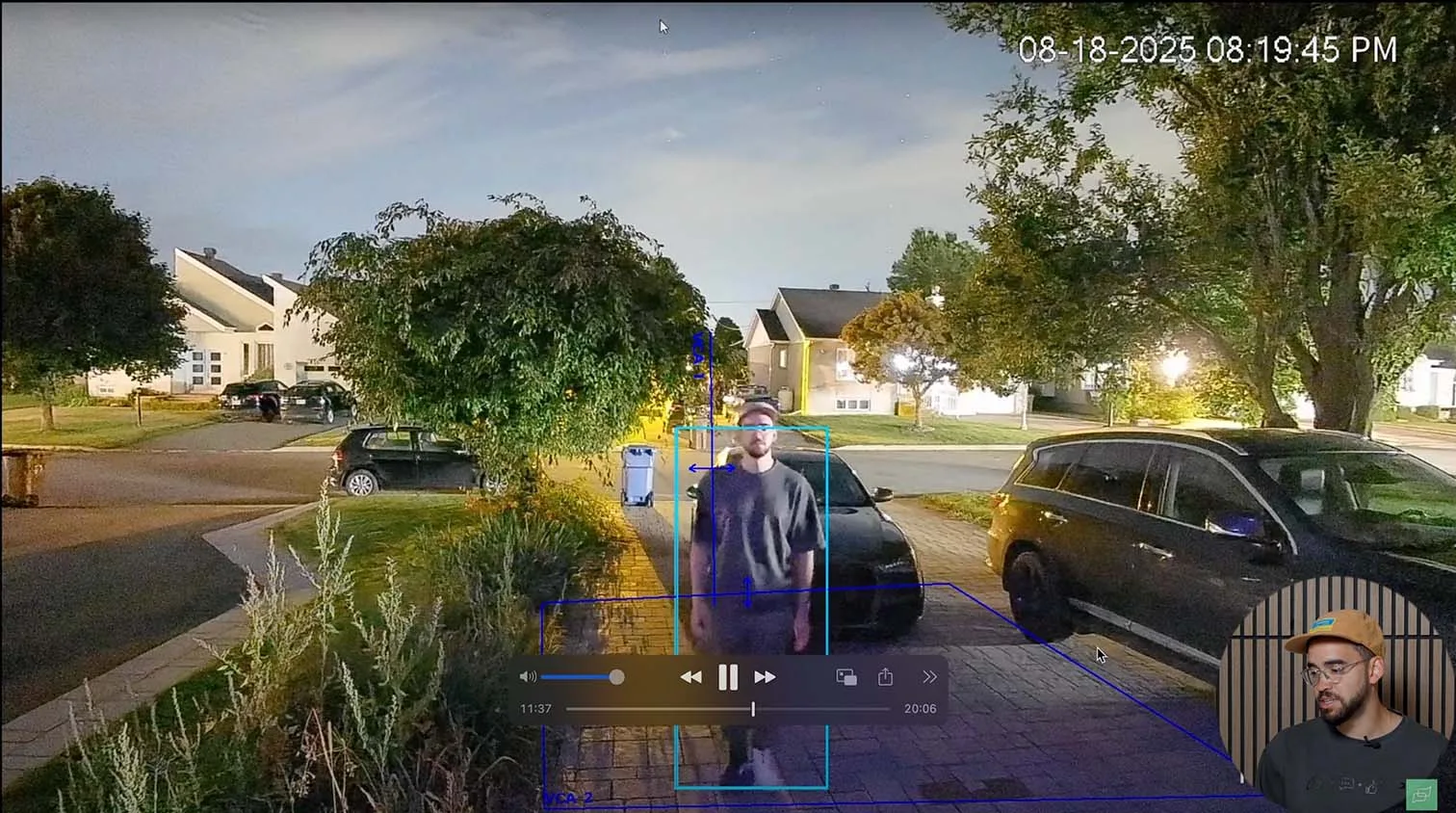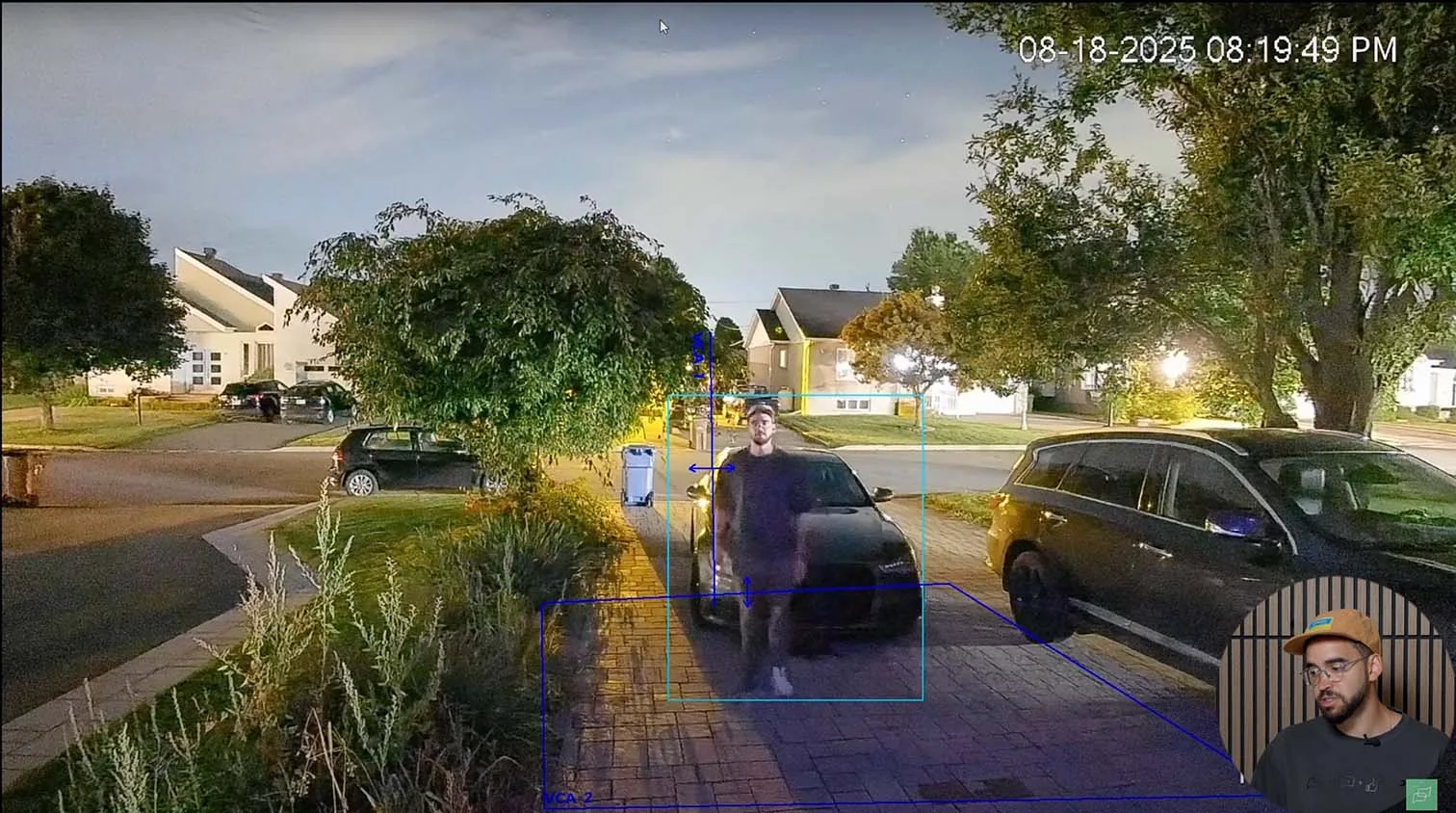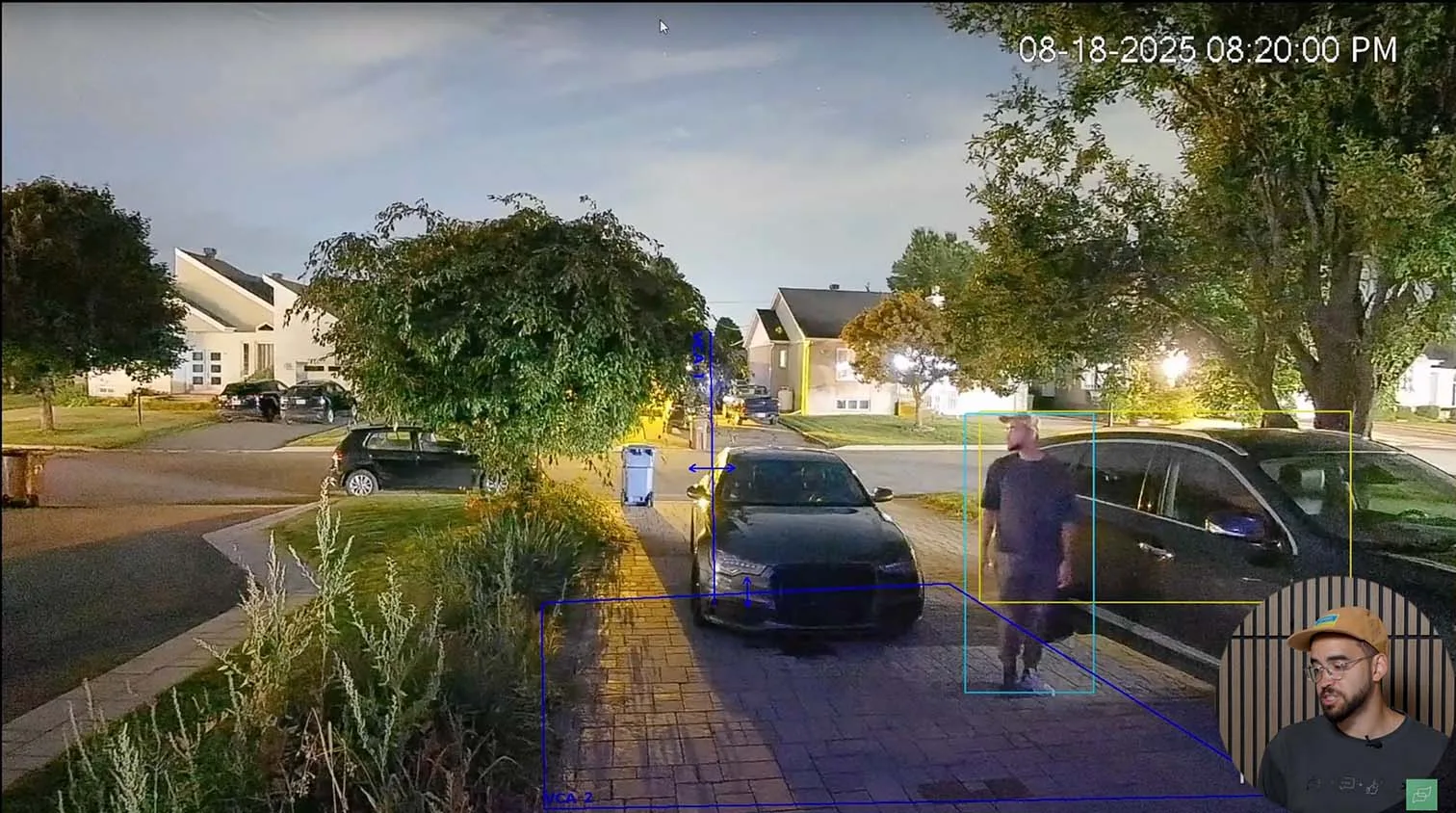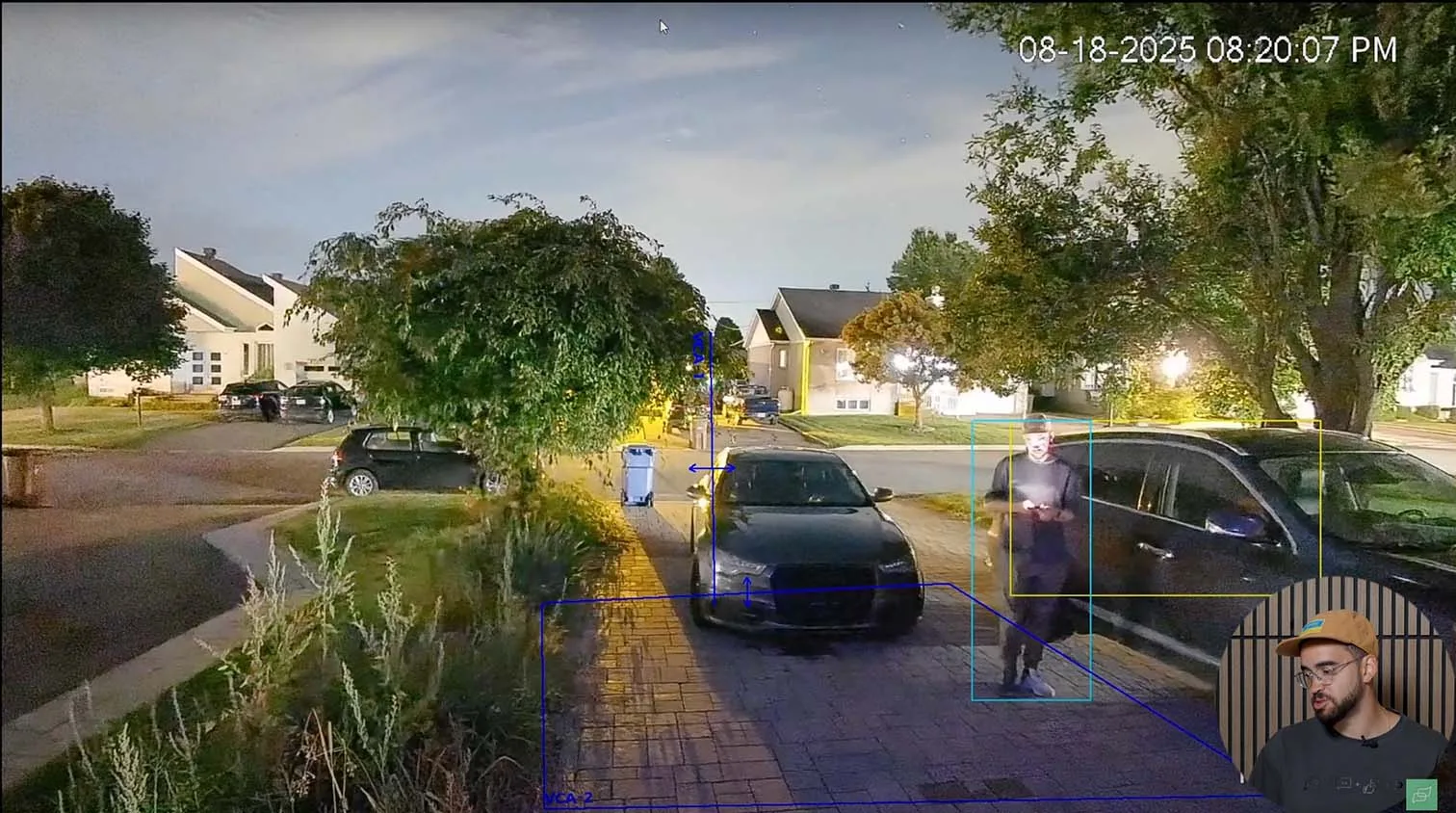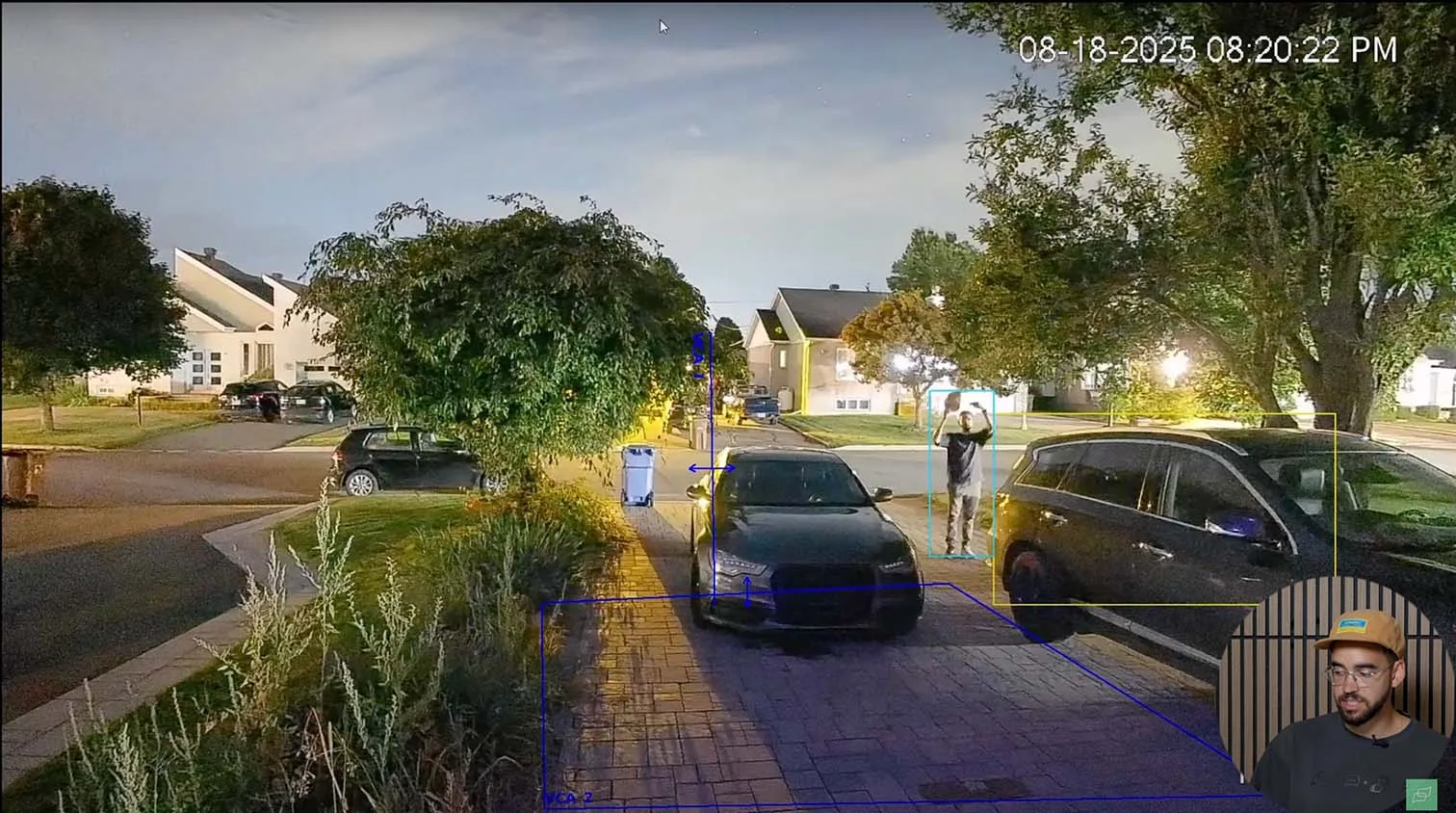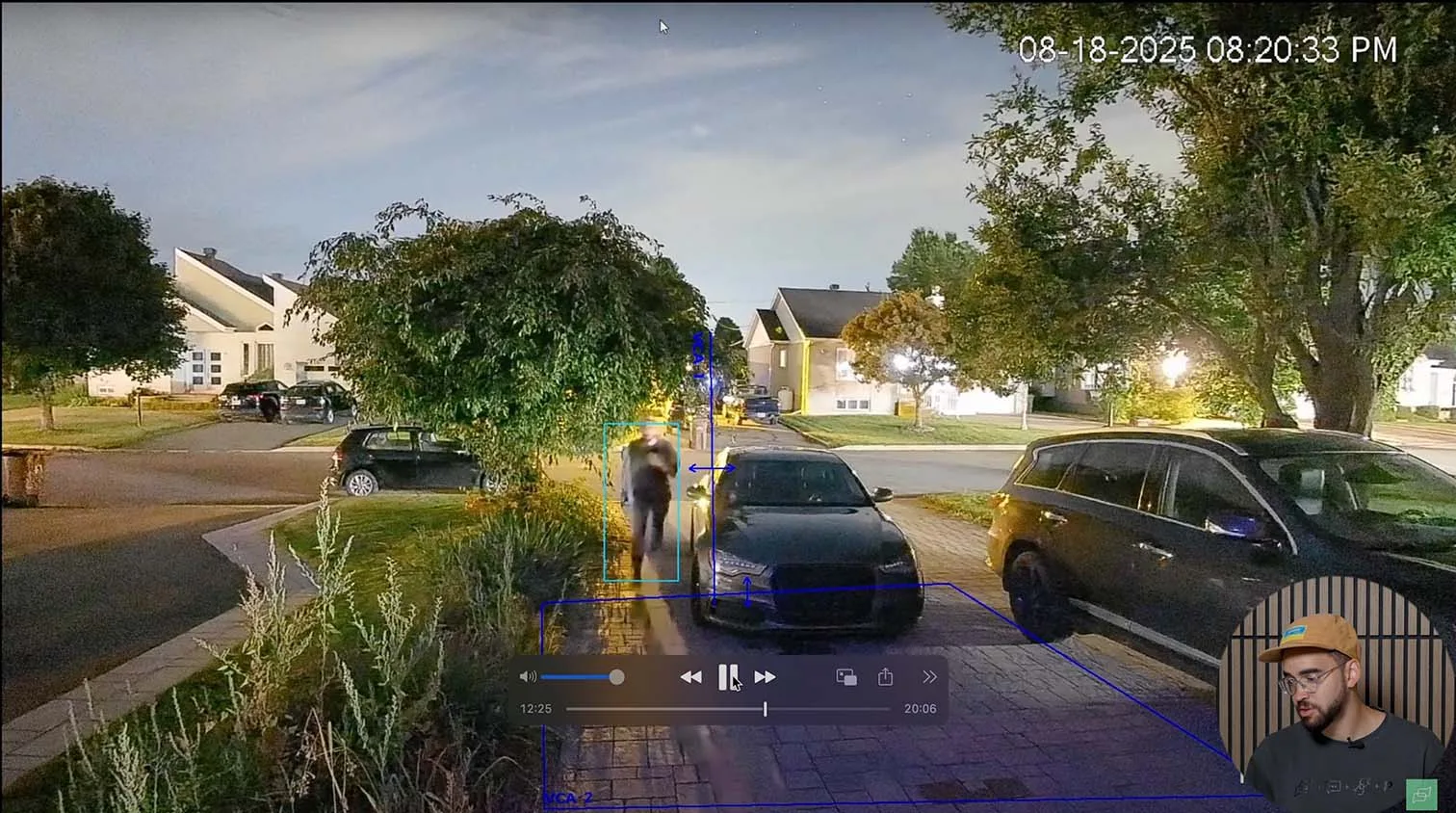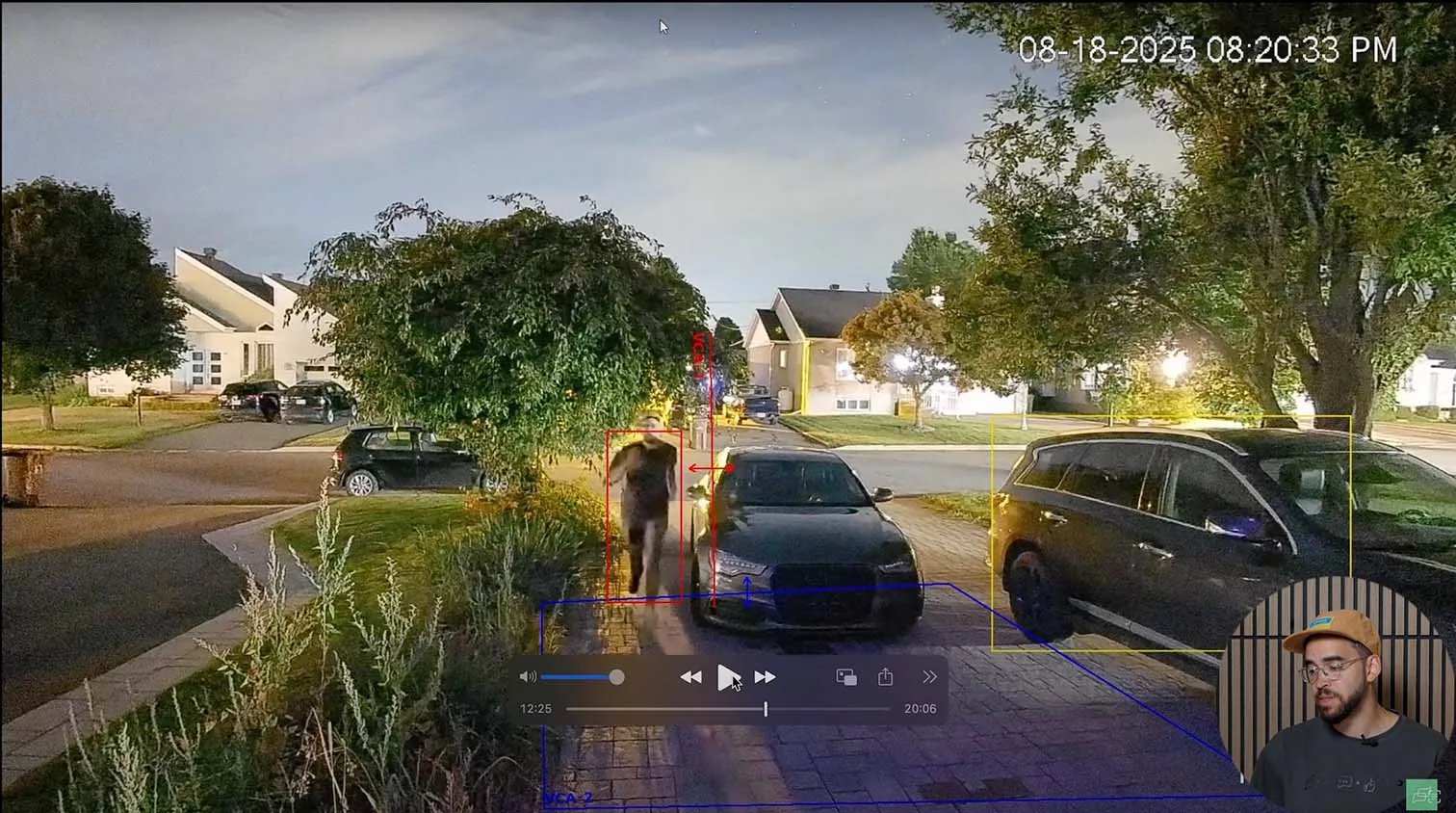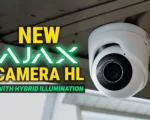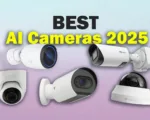Luminys enters night surveillance from a different angle, and our first field tests of LumiNightKing cameras explain why integrators and everyday users should pay attention.
LumiNightKing technology delivers full-color night vision without visible IR glow. In controlled demos, we verified how aperture, sensor size, shutter timing, and AI-ISP work together to produce color-accurate, low-noise video in near-dark scenes. The results apply to homeowners, small businesses, and installers across North America, with practical notes for farms, residential perimeters, and storefronts.
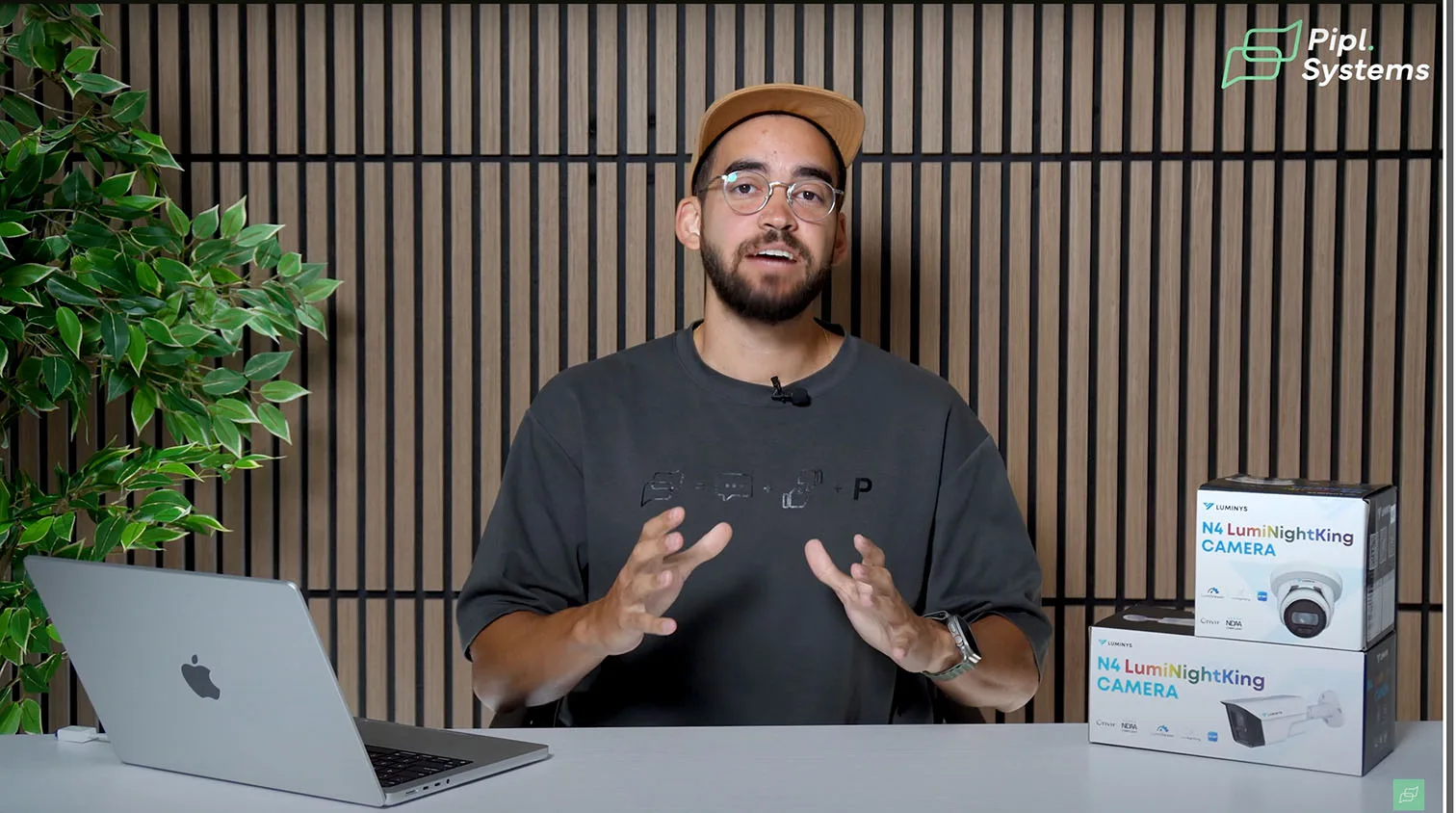
What we tested
• N4T-4VA2 turret camera, 4 MP, F1.0, two white-light LEDs
• N4B-4VA2 bullet camera, 4 MP, F1.0, four white-light LEDs
• Scenarios, a farm with minimal ambient light and a residential frontage with limited neighborhood lighting
Who does this review help?
Professional integrators building discreet systems for theaters and clubs, and facility managers who need deterrent lighting with clean incident timelines. If you evaluate color night vision security cameras for real deployments, these findings remove guesswork.
Why color instead of IR
Full-color night vision preserves identifiers that monochrome IR drops, clothing and vehicle colors, signage, and landscaping tones. AI-powered night vision analytics also track better with color-true inputs, which lowers false alerts and speeds up searches during reviews.
Our testing approach
We staged the camera height near 15 ft, logged day baselines for reference color, then repeated paths at measured distances after dark. We captured both covert runs with LEDs off and deterrent runs with LEDs on, and we varied the shutter to observe motion handling versus brightness. All footage was evaluated on calibrated displays to keep the comparison honest.
How Does Nighttime Color Technology Work
Aperture and optics
A lower f-number admits more light per frame. Both test units qualify as F1.0 aperture security camera designs, which materially lowers the minimum scene illumination required for color. In practice, we recorded usable color near about 0.0006 lux at F1.0, consistent with the family spec.
Sensor size and pixel pitch
Think of the image sensor as a light bucket. A large pixel sensor security camera gathers more photons, lifts shadow detail, and tames noise. That stability helps analytics keep edges, fabrics, and license plates intact instead of dissolving into a smear. The result looks natural rather than over-processed.
Shutter strategy for motion
Longer integration brightens frames, although it can blur motion. Shorter exposure preserves motion detail, although it demands more light. For driveways and walk-ups, start conservative on shutter, let the F1.0 optics and AI denoising carry brightness, then fine-tune per scene.
AI-ISP pipeline explained
AI-ISP, the AI image signal processor, performs context-aware denoising and color refinement. Skin tones, sky, grass, and vehicle paint benefit from object-specific mapping. This color night vision technology keeps white balance and micro-contrast consistent as lighting changes, and it feeds cleaner inputs to intelligent motion detection for stronger classification.
Covert and deterrent operating modes
Covert night vision means LEDs off and no IR glow, ideal for wildlife safe security cameras, clubs, and theaters where you must not break immersion. Deterrent night vision keeps white-light LEDs on from dusk to dawn for car lots, construction sites, and critical infrastructure. The N4T-4VA2 uses two LEDs with about 100 ft coverage. The N4B-4VA2 uses four LEDs with about 150 ft coverage. You can run covert most nights, then schedule deterrent lighting during higher-risk windows.
Buyer takeaways
If your site has at least a trace of ambient light, full-color night vision from Luminys security cameras delivers clearer evidence than IR alone. Choose the N4T-4VA2 turret camera for compact, discreet façades. Choose the N4B-4VA2 bullet camera when you want longer deterrent reach. Both support PoE, edge storage, intelligent motion detection, and modern VCA, such as line crossing and intrusion, which makes searches faster and reports more complete.
Demo
Daytime footage, establishing the baseline
We started with daylight runs to lock color accuracy and spatial detail. The N4T-4VA2 turret camera, mounted at roughly fifteen feet, produced clean four megapixel imagery with consistent exposure from foreground to fence line. This baseline helped us judge how Luminys LumiNightKing cameras should render the same scene after dark and allowed us to verify focus, depth of field, and lens sharpness across the frame before any tuning.
Nighttime farm demo, minimal ambient light
Objective: verify full color capture in near dark conditions without disturbing animals.
Findings, with the white light LEDs enabled, the N4T held useful color out to about one hundred feet, and the N4B-4VA2 bullet camera reached roughly one hundred fifty feet. Clothing color, shoe contrast, and fence tone remained accurate well past sixty feet and stayed legible near one hundred feet for situational identification. With LEDs disabled, both units still preserved recognizable color on the subject and static objects by using available ambient light only. Motion detail remained identifiable with limited trailing so long as shutter times were not pushed too slow.
Use cases, color night vision for farms, discreet surveillance for clubs and theaters where visible light breaks immersion, and security cameras without IR glow for eco-sensitive locations. In these scenarios, covert night vision keeps wildlife calm and avoids attention while still providing evidence-grade color.
Residential demo, low ambient light
We remounted at a residential frontage with only neighborhood spill light. The cameras continued to deliver stable color on recycling bins and parked vehicles. Intelligent motion detection, iMD, tracked persons and cars, added line crossing triggers, and placed events on a searchable timeline. For busy driveways, this workflow saves review time and strengthens incident reporting. It also demonstrates how color night vision security cameras pair with AI-powered night vision analytics to reduce false positives in everyday use.
LED strategy, covert versus deterrent
Covert mode, LEDs off, removes visible signatures and eliminates light pollution while the AI-ISP maintains color and suppresses noise. Deterrent mode keeps white light on from dusk to dawn for lots, construction sites and critical infrastructure. The N4T-4VA2 ships with two LEDs near one hundred foot reach, the N4B-4VA2 ships with four LEDs near one hundred fifty foot reach. You can schedule deterrence for high-risk windows, then return to covert monitoring during quiet hours.
Motion and shutter tuning, practical ranges
Begin with a conservative shutter to preserve motion edges. Let the F1.0 aperture security camera optics and the AI-ISP carry brightness. If the subject path is fast, shorten exposure until trails disappear while keeping noise in check. In our runs, walk speeds and light jogging remained clear for identification at common driveway distances once exposure was balanced against ambient light.
Evidence quality, what full color night vision adds
Full color night vision retains identifiers that monochrome IR misses, jacket hue, vehicle paint, bin color, signage accents, and landscaping tones. That detail improves searches inside the timeline and boosts the accuracy of downstream analytics. For Luminys security cameras, the combination of AI-ISP, large pixel sensor, and F1.0 optics is what makes these LumiNightKing technology results repeatable across both the farm and residential scenes.
Helpful references for readers
Technical Summary, N4T-4VA2 versus N4B-4VA2
Side-by-side specifications
| Category | N4T-4VA2 turret camera | N4B-4VA2 bullet camera |
|---|---|---|
| Form factor | Turret, compact, low profile | Bullet, extended body for longer throw |
| Image sensor | 1/1.8 in 4 MP progressive CMOS | 1/1.8 in 4 MP progressive CMOS |
| Max resolution and frame rate | 2688 x 1520 at 30 fps | 2688 x 1520 at 30 fps |
| Lens and aperture | 2.8 mm fixed, F1.0 | 2.8 mm fixed, F1.0 |
| Field of view | Horizontal 112° Vertical 60° Diagonal 134° | Horizontal 112° Vertical 60° Diagonal 134° |
| Minimum color illumination | About 0.0006 lux at F1.0 | About 0.0006 lux at F1.0 |
| White light LEDs and reach | Two LEDs, about 100 ft maximum illumination distance | Four LEDs, about 150 ft maximum illumination distance |
| Day or night modes | Automatic ICR, Color, Black and White | Automatic ICR, Color, Black and White |
| Wide dynamic range and noise | 120 dB WDR, 3D NR | 120 dB WDR, 3D NR |
| Shutter range | 1/3 s to 1/100,000 s, auto or manual | 1/3 s to 1/100,000 s, auto or manual |
| Signal to noise ratio | Greater than 50 dB | Greater than 50 dB |
| DORI distances, reference | Detect 46.9 m, Observe 17.9 m, Recognize 9.3 m, Identify 4.5 m | Detect 57.7 m, Observe 23.0 m, Recognize 11.4 m, Identify 5.6 m |
| Compression and codecs | H.265+, H.265, H.264+, H.264, MJPEG sub stream | H.265+, H.265, H.264+, H.264, MJPEG sub stream |
| Streams and bitrate | Two streams, 3 to 6144 kbps typical range | Two streams, 3 to 6144 kbps typical range |
| Region of Interest and privacy | ROI four zones, privacy masking four zones | Privacy masking four zones, ROI not specified in the datasheet excerpt |
| Video analytics | Line crossing, intrusion, intelligent motion detection iMD for humans and vehicles | Line crossing, intrusion, intelligent motion detection iMD for humans and vehicles |
| Audio | Built in microphone, PCM and G.711 families | Built in microphone, PCM and G.711 families |
| Edge and network storage | MicroSD up to about 256 GB, plus FTP or SFTP and NAS | MicroSD up to about 256 GB, plus FTP or SFTP and NAS |
| Network interface and protocols | 10 or 100 Base T RJ45; IPv4 or IPv6, HTTPS, RTSP, ONVIF S or G or T and others | 10 or 100 Base T RJ45; IPv4 or IPv6, HTTPS, RTSP, ONVIF S or G or T and others |
| Power and standard | 12 VDC or PoE 802.3af | 12 VDC or PoE 802.3af |
| Typical or maximum power | PoE, normal about 2.5 W, maximum about 6.4 W; 12 VDC, normal about 2.0 W, maximum about 5.3 W | PoE, normal about 3.0 W, maximum about 7.2 W; 12 VDC, normal about 2.0 W, maximum about 5.5 W |
| Housing and protection | Metal body, IP67 enclosure rating | Metal body, IP67 enclosure rating |
| Operating environment | About minus 40 to 140 °F, less than 95 percent RH, non condensing | About minus 40 to 140 °F, less than 95 percent RH, non condensing |
| Thermal technologies | LumiPolarPro for cold starts, LumiDesertPro for high heat | LumiPolarPro for cold starts, LumiDesertPro for high heat |
| Dimensions and weight | Diameter 122.0 mm x height 111.8 mm, net weight about 0.5 kg | 220.1 mm x 87.4 mm x 78.8 mm, net weight about 0.6 kg |
| Installation angles | Pan 0 to 360, tilt 0 to 78, rotation 0 to 360 | Pan 0 to 360, tilt 0 to 90, rotation 0 to 360 |
| Interoperability | ONVIF Profiles S, G, T; CGI; mainstream browsers | ONVIF Profiles S, G, T; CGI; mainstream browsers |
| Client software | LumiViewer and LumiViewer Mobile App | LumiViewer and LumiViewer Mobile App |
| Compliance | NDAA, FCC, IC | NDAA, FCC, IC |
What the numbers mean for buyers
• Reach and deterrence. The bullet’s four LEDs extend visible coverage to about one hundred fifty feet. Choose the N4B-4VA2 where you need deterrent monitoring with white light across long driveways, yards, or lots.
• Discretion and aesthetics. The turret’s compact shape blends into front-of-house façades, restaurants, theaters, and residential entries. It still delivers full color night vision using LumiNightKing technology, with LEDs off when you want covert night vision.
• Low light behavior. Both models share a 2.8 mm F1.0 lens and a large pixel sensor, so the baseline sensitivity is the same. The AI-ISP stabilizes color and reduces noise, which helps analytics classify humans and vehicles correctly in near-dark scenes.
• Environmental hardening. IP67 housing, a metal body, and the combination of LumiPolarPro and LumiDesertPro support true all-weather deployment across North America.
• Integration and storage. PoE simplifies wiring. Edge storage up to about 256 GB protects critical evidence if the recorder or network link drops. ONVIF S or G, or T allows use with third-party VMS if needed.
Practical Setup Guidance
Aperture and shutter pairing for color at night
Begin at F1.0 and moderate shutter times. Shorten exposure until motion trails disappear while keeping noise in check. Use the timeline to validate that pedestrians and vehicles remain sharp during actual site activity. This balances the strengths of an F1.0 aperture security camera with the scene dynamics you expect.
AI-ISP tuning that improves evidence quality
Enable adaptive denoising first. Apply small color gains only when skin tones or foliage drift from the daytime baseline. Lock white balance at night if ambient lighting is stable. Keep white light off for covert monitoring unless policy requires constant illumination. This preserves the discreet posture that many buyers want in color night vision security cameras, while the AI-powered night vision pipeline maintains clarity.

Deployment patterns by site, recommendations
• Farms and wildlife sensitive areas. Mount away from animal enclosures to minimize spill light. Prefer covert mode at night. LumiNightKing cameras keep full color evidence without IR glow, which reduces stress on livestock and native species.
• Construction sites and lots. Use deterrent monitoring with white light at gates and material yards. The N4B-4VA2 covers longer approaches and open ground. Combine line crossing rules with iMD to cut false alerts from wind or small animals.
• Critical infrastructure and utilities. Layer color night vision for critical infrastructure with hard line crossing and intrusion zones at perimeter choke points. Edge storage ensures retention during transient network events.
• Residential frontage. Aim to cover door approaches, sidewalks, and curbside vehicle zones. The N4T-4VA2 offers a smaller footprint for façades while keeping full color night vision that improves identification in police reports.
Network and storage planning, concise checklist
• Power. Use PoE 802.3af for simplicity. Budget about 7.2 W per N4B and about 6.4 W per N4T under peak conditions.
• Throughput. Start with H.265 or H.265 plus and a variable bitrate target near 3 to 6 Mbps for the main stream at 4 MP 30 fps. Raise only if the detail in motion suffers.
• Retention. Size MicroSD for incident buffering, then set FTP or SFTP, or NAS for long-term archiving. Validate overwrite behavior and alarms for disk full or disk error.
• Privacy and ROI. Define privacy masks for neighboring windows. Use Region of Interest for the N4T to protect the bitrate budget on critical lanes or door areas.
• Interoperability. Enable ONVIF Profiles S, G, or T when integrating with third-party VMS. Confirm time sync with NTP for accurate event stamps.
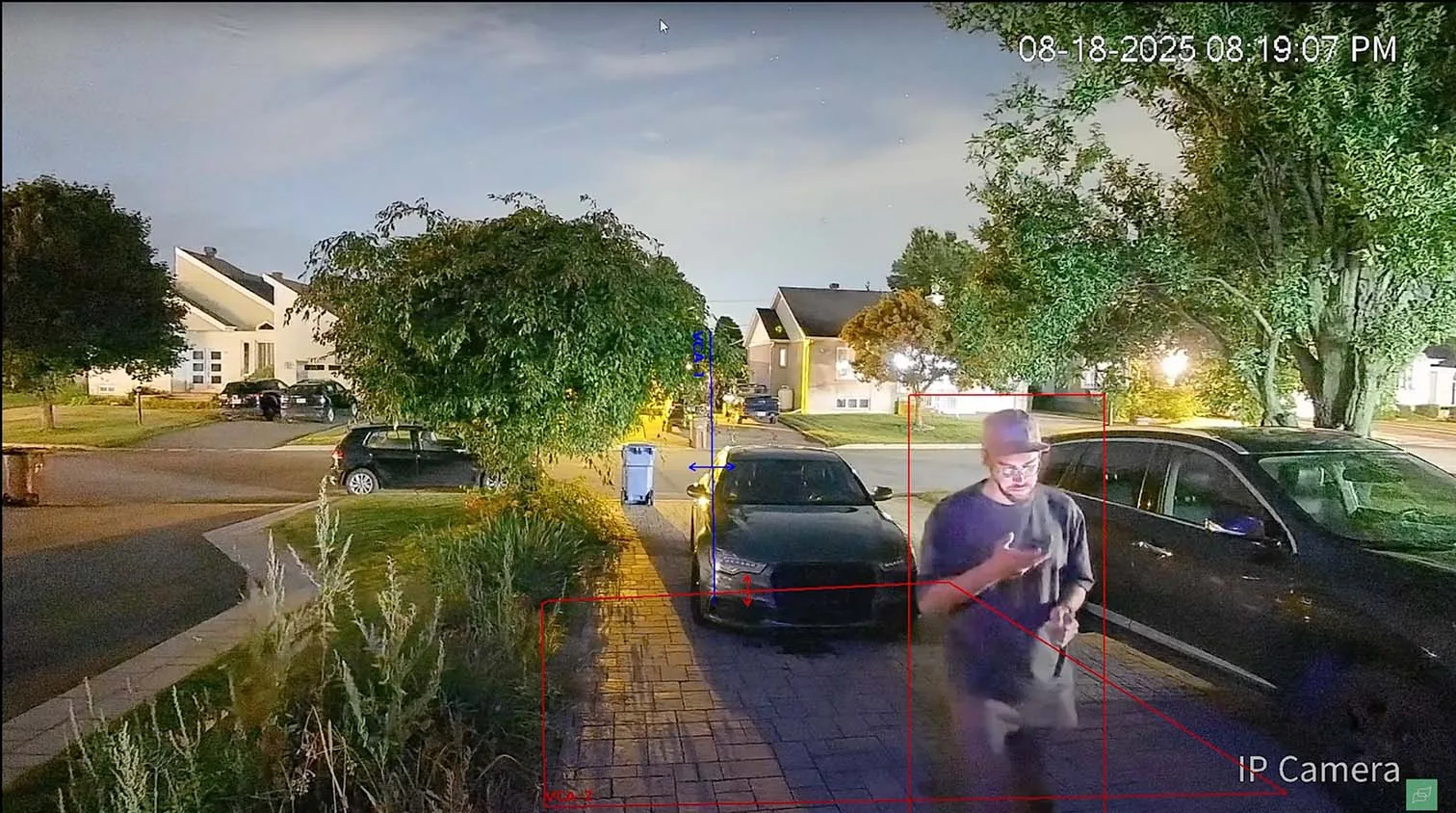
Commissioning steps that save time
• Daylight baseline. Capture a short daylight clip to lock focus and color reference.
• Night trials. Test with LEDs off and on, then select covert or deterrent policy per hour of night.
• Analytics validation. Walk the lines you drew, cross at angles you expect, and log how iMD tags people and vehicles.
• Documentation. Store final settings with firmware version, lens cleaning dates, and SD card health. This keeps a professional record that installers and owners can maintain.
These recommendations reflect how Luminys LumiNightKing and the broader LumiNightKing camera family deliver full color night vision using AI-ISP, a large pixel sensor security camera platform, and an F1.0 optical path. The result is a practical, professional-grade path to deploy color night vision technology without IR glow while preserving deterrence options where required.
To better understand how this technology fits into the company’s wider ecosystem, the article Luminys at ISC West: Network Security Cameras, LumiCloud, LumiCenter VMS, and NightKing Tech provides additional insight into platform-level integration and future directions. Below, you can also watch the video connected to these innovations.
Final Thoughts
Where LumiNightKing makes a real difference
Luminys LumiNightKing gives operators color context at night when most systems drop to monochrome. In near-dark scenes with a touch of ambient light, these color night vision security cameras preserve clothing tones, vehicle paint, signage, and scene markers that help close cases and speed reviews. For North American homes, farms, and storefronts that want professional-grade night vision cameras, the balance of optics and AI-ISP works in practice, not only in spec sheets.

Trade-offs versus conventional IR
If a site has absolutely no ambient light, classic IR still holds an edge for any long, featureless reach where you only need silhouettes. LumiNightKing technology favors environments with trace illumination from the moon, neighboring structures, or skyglow. In those conditions, full-color night vision paired with AI-powered night vision analytics cuts false alerts, improves searchability in timelines, and gives investigators details that IR cannot provide.
Model selection
Choose the N4B-4VA2 bullet when you want visible deterrence and longer white-light reach across lots and entry roads. Choose the N4T-4VA2 turret when you need a compact footprint for discreet façades, clubs, and theaters. Both are IP67, PoE capable, and support edge storage, which keeps recordings available during brief network outages.
What to expect as AI advances
Expect the AI-ISP to keep improving motion handling and low-noise color in faster scenes. The pipeline already applies object-aware adjustments for skin, foliage, sky, and vehicles. As models mature, you should see cleaner edges at shorter exposures, better face and plate readability in very low lux, and fewer artifacts when subjects move quickly.
Bottom line for buyers and integrators
For sites with any meaningful ambient light, LumiNightKing cameras give you more usable evidence at night with fewer review clicks. IR has its place, yet for most residential and small business deployments, the color-true output from Luminys security cameras provides clearer reports and faster incident resolution.
Frequently Asked Questions
Do these cameras produce full-color night vision without visible light?
Yes. In near-dark scenes with some ambient light, they keep color without IR glow or white LEDs. If a site requires a visible presence, the white-light mode can stay on from dusk to dawn for deterrence.
Is the installation limited to PoE only?
No. Both models accept PoE 802.3af and 12 VDC. The dual power options help with retrofits and mixed power plants.
How does the AI-ISP improve analytics accuracy?
Cleaner, color-true frames give intelligent motion detection better inputs. You get more reliable person and vehicle classification, fewer false alerts from pets or wind-moved objects, and more consistent timelines for search.
Are these suitable for clubs or theaters where lighting should remain discreet?
Yes. Covert mode keeps LEDs off, so the atmosphere remains intact while the system still captures useful color detail. This is a common request for venues and themed environments.
What makes these different from typical IR cameras?
Typical IR produces monochrome images and can add visible glow or light pollution. LumiNightKing technology focuses on full-color night vision with optional deterrent lighting, which preserves evidence quality and site aesthetics.
Do they integrate with third-party VMS and support edge storage?
Yes. Both models are ONVIF S, G, and T compliant for broad VMS support. Each includes a microSD slot for local recording, plus FTP or NAS targets for longer retention.
